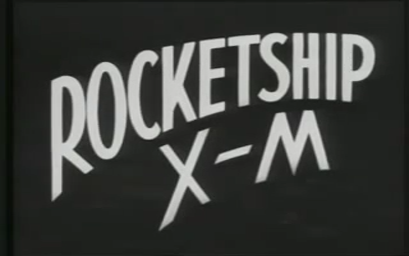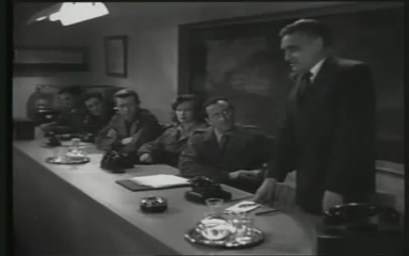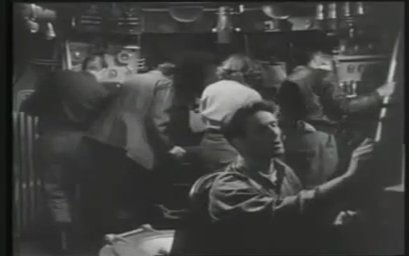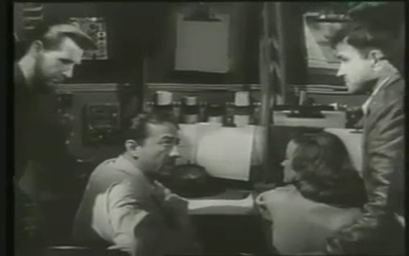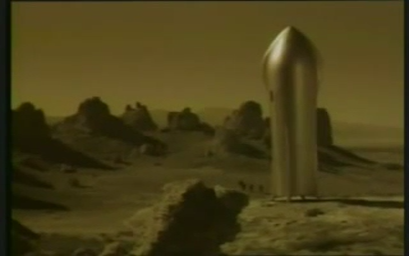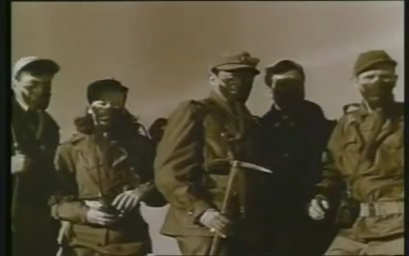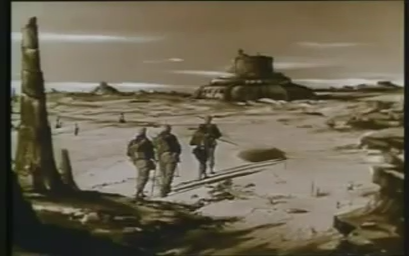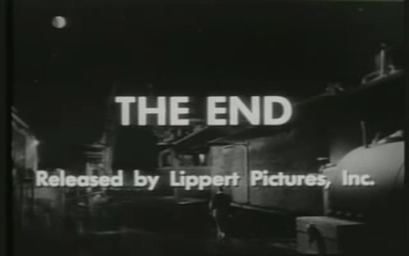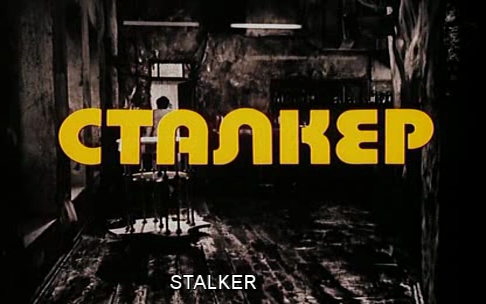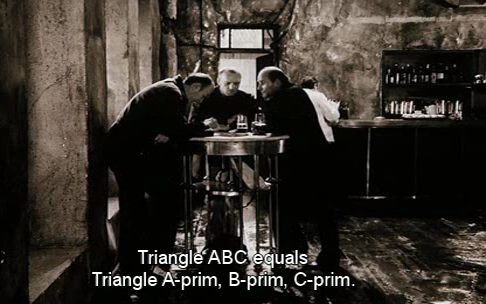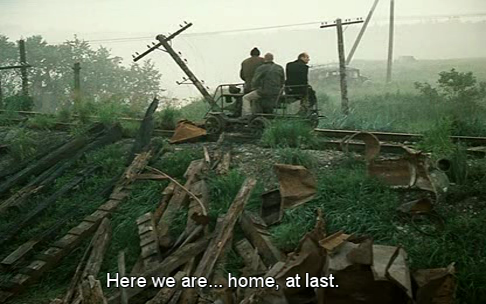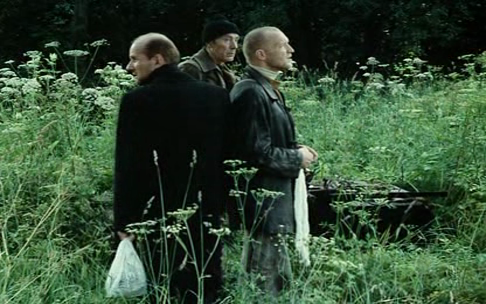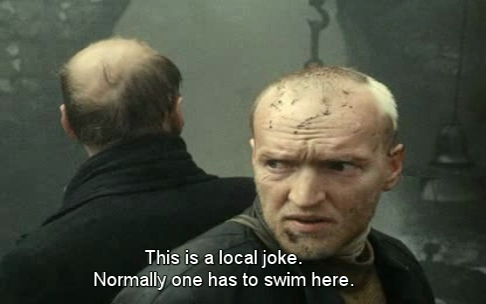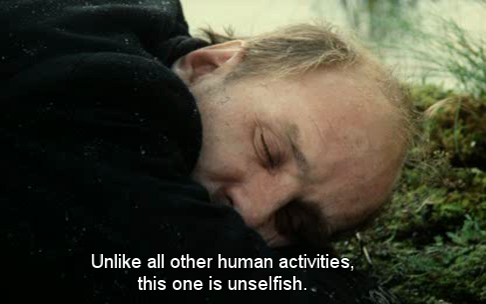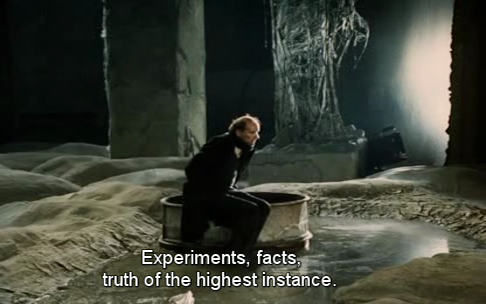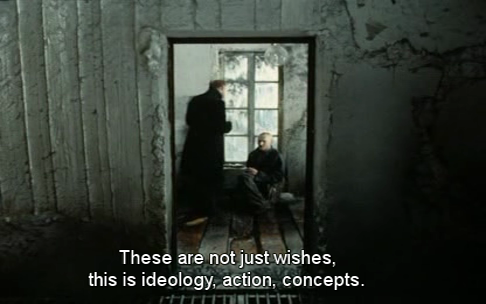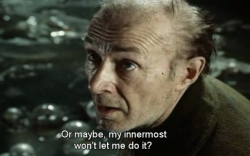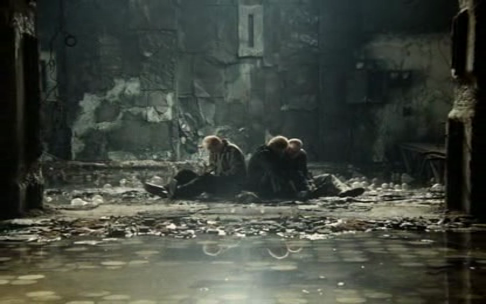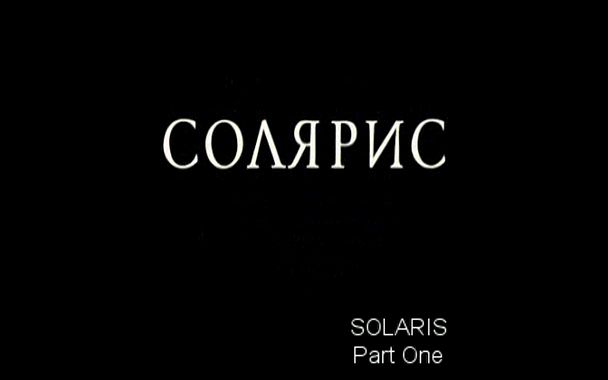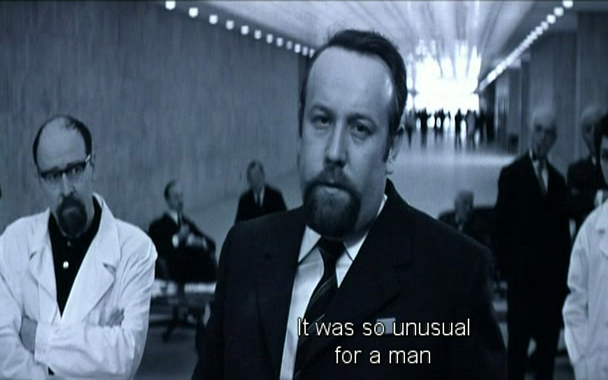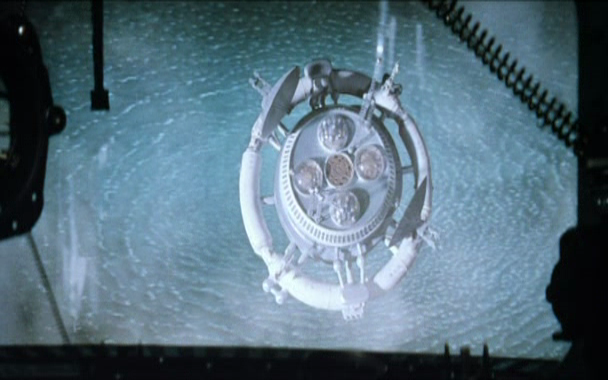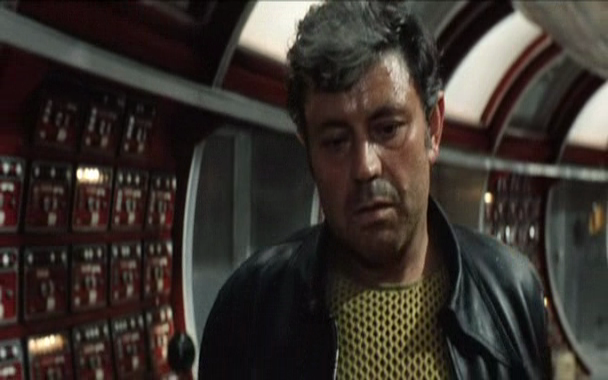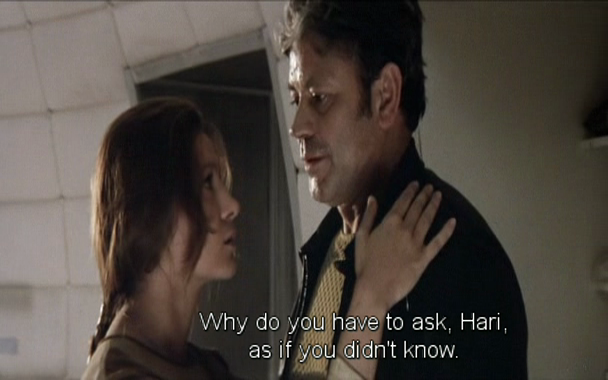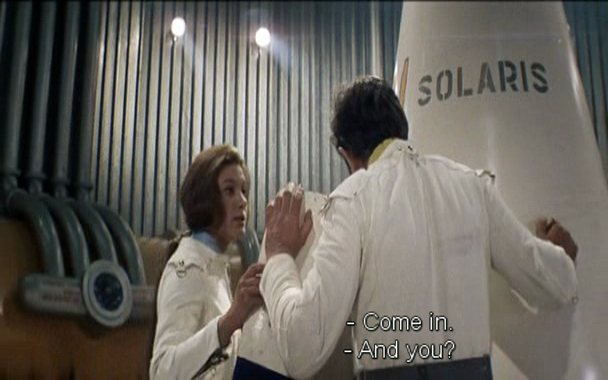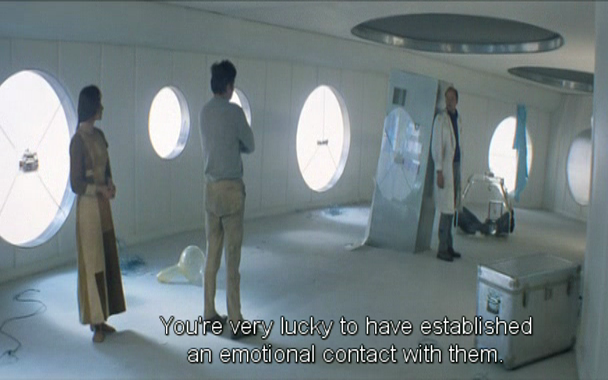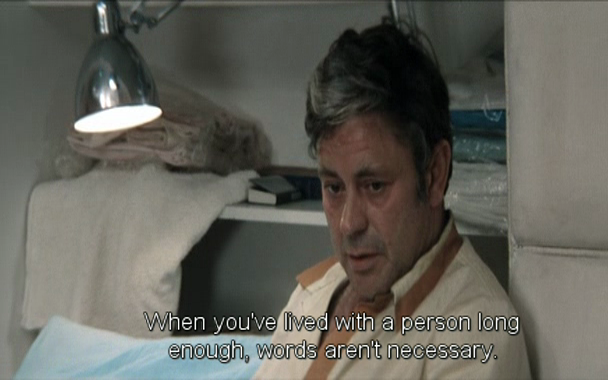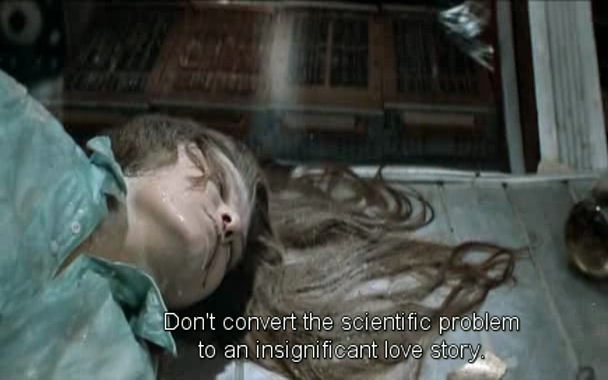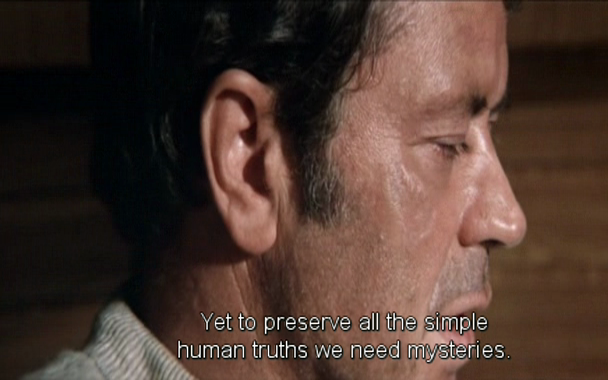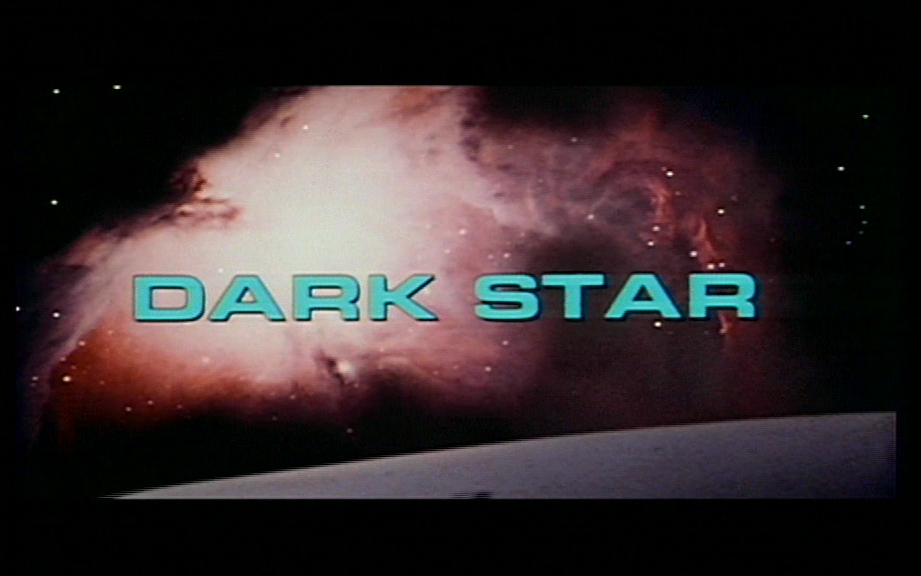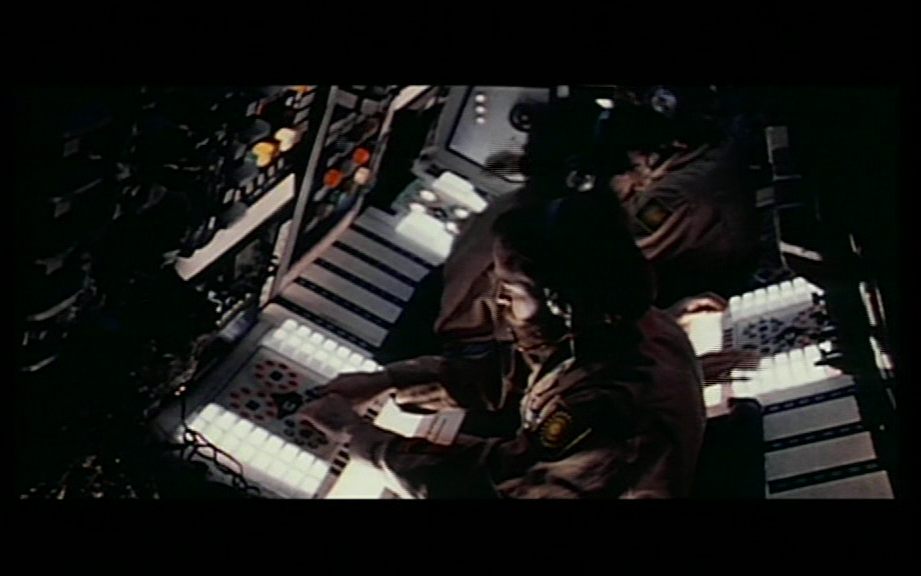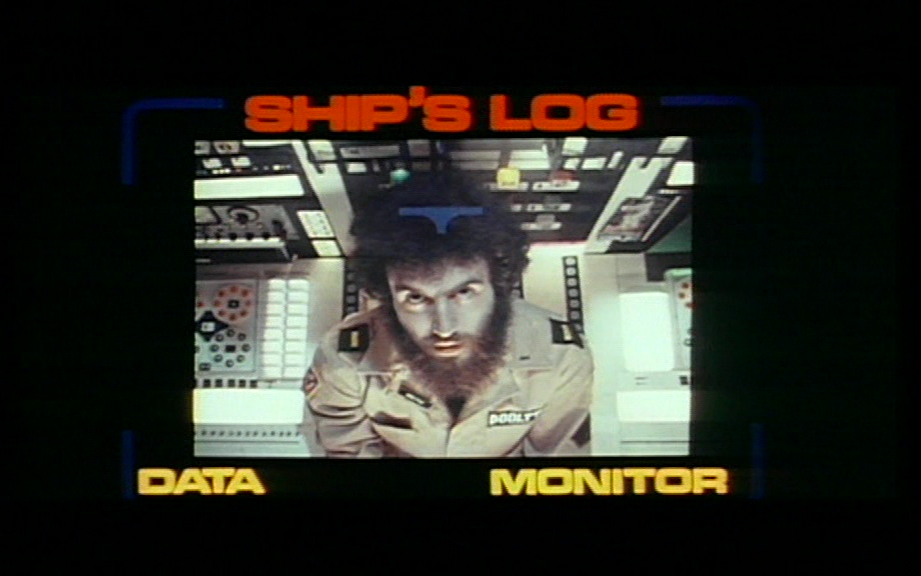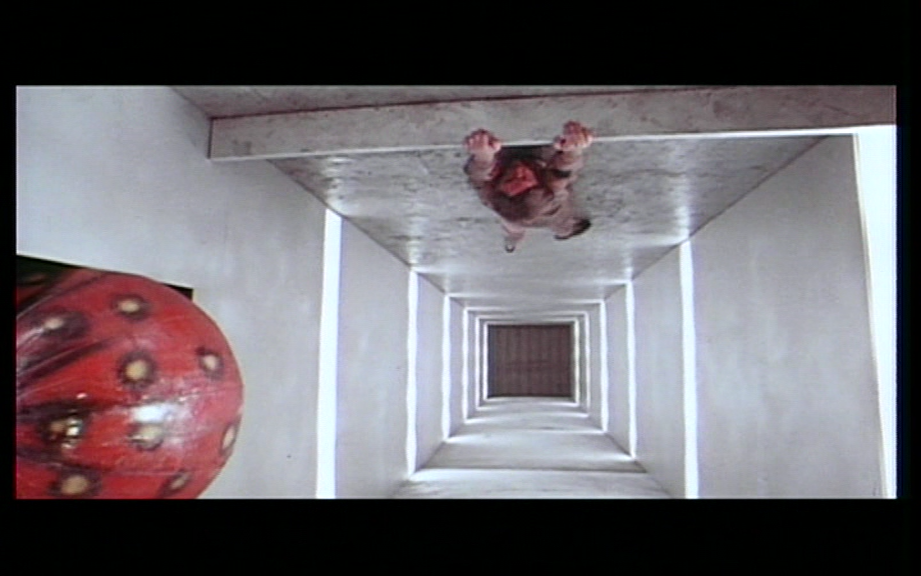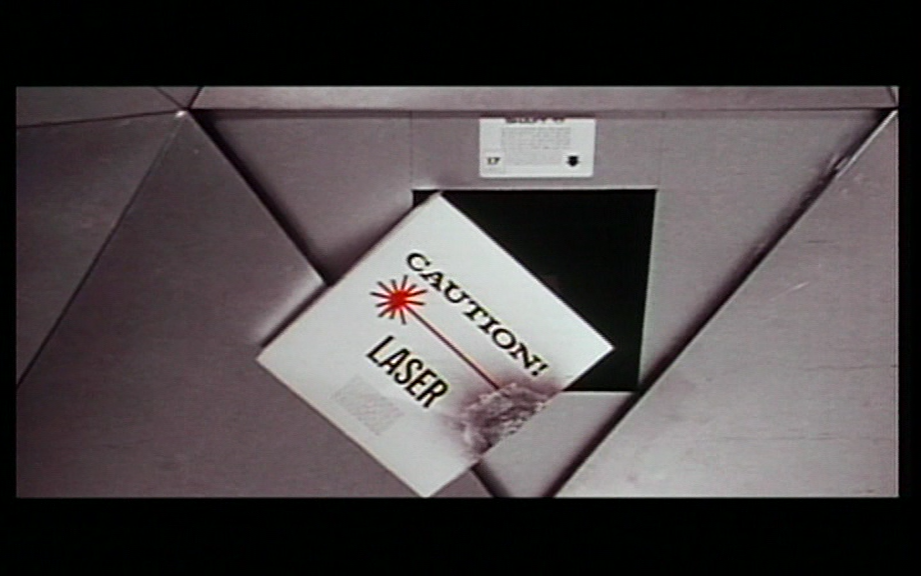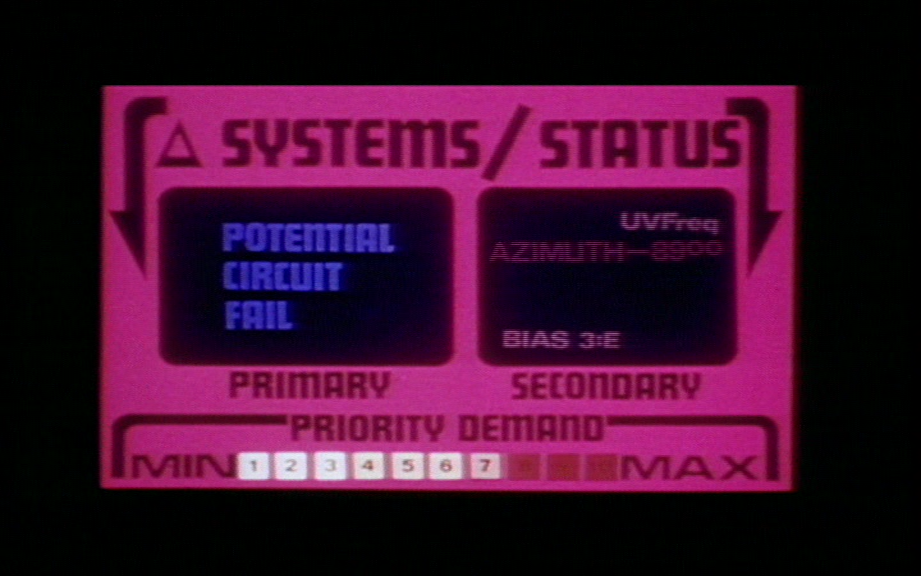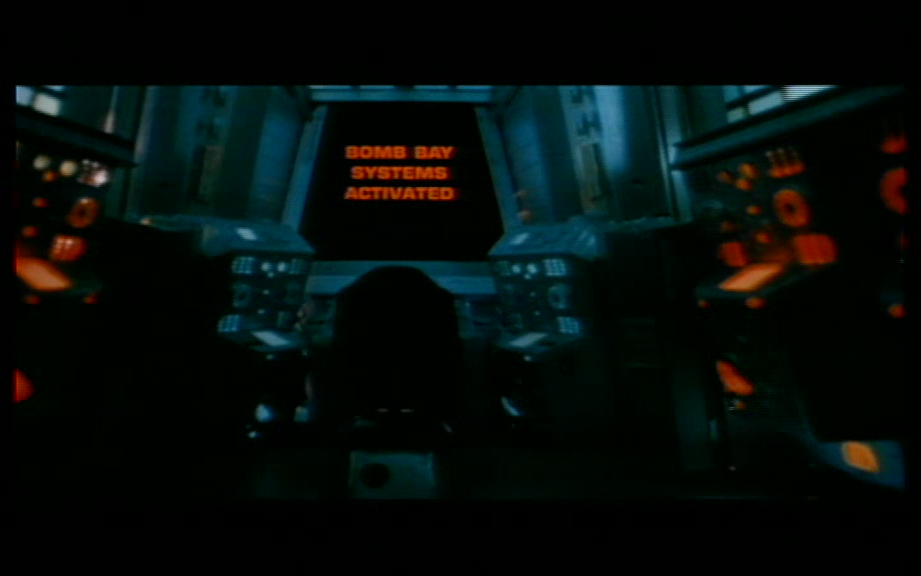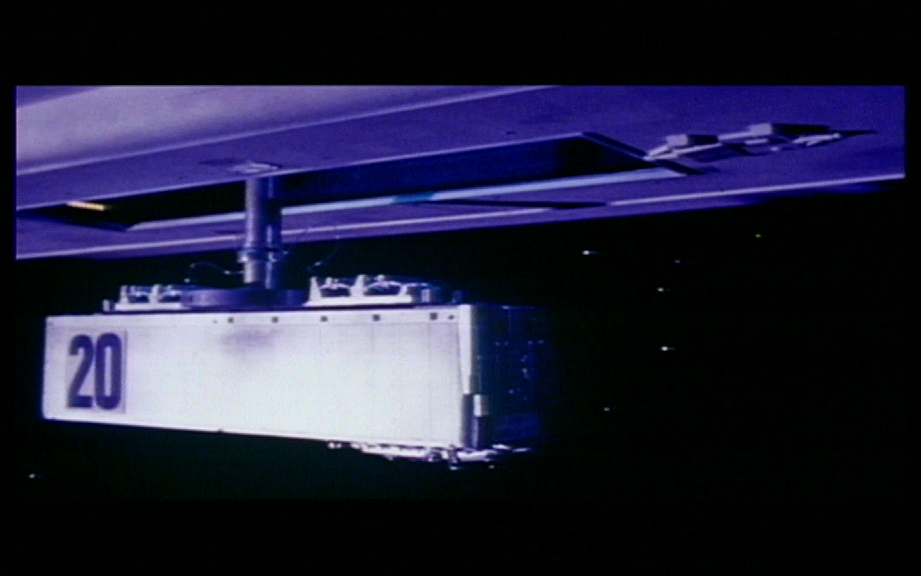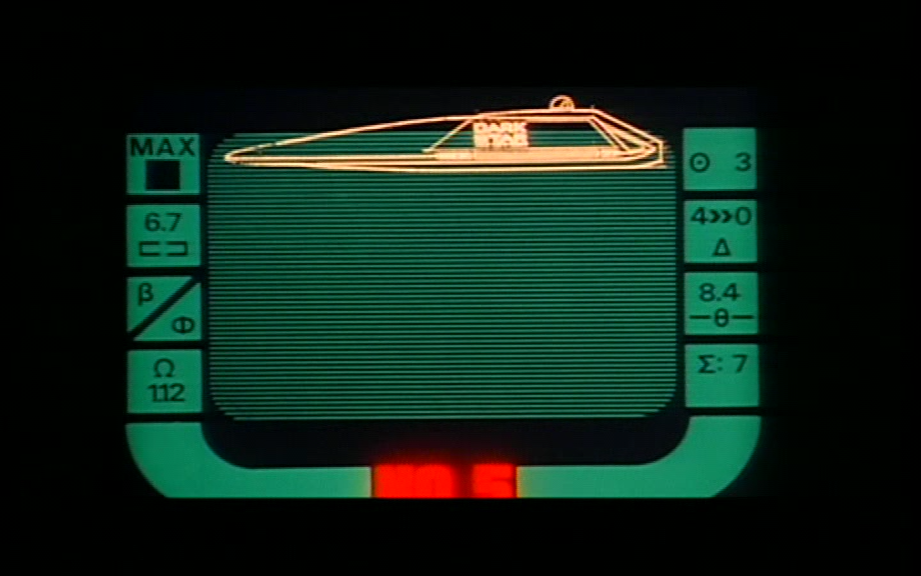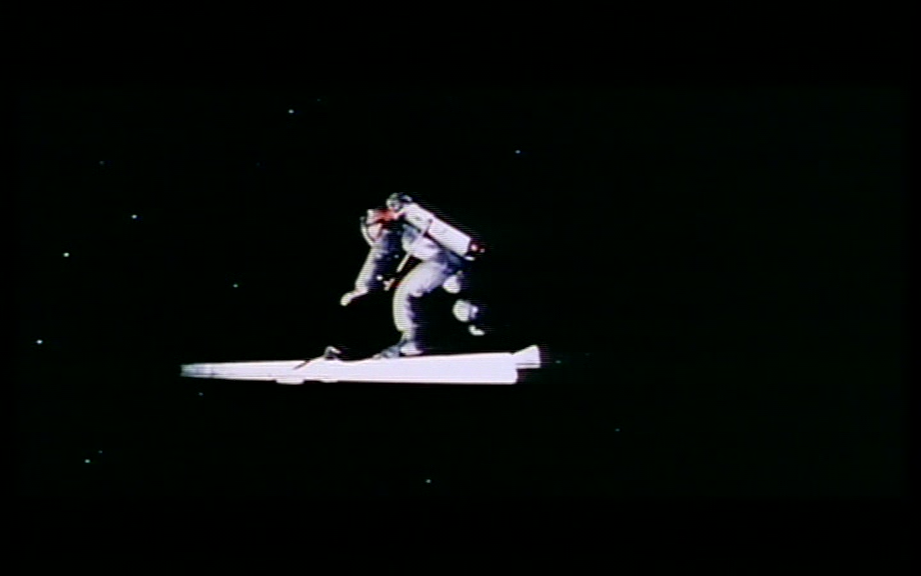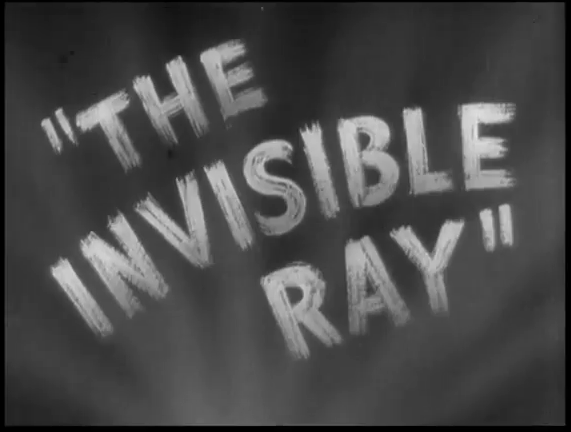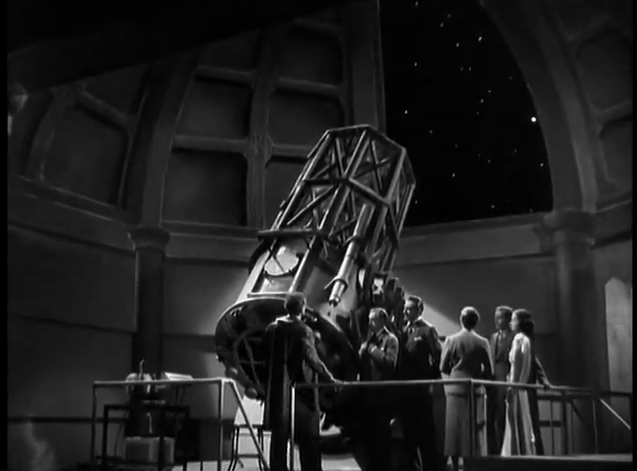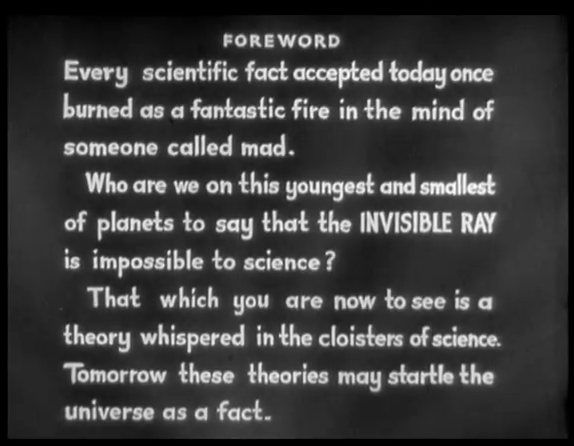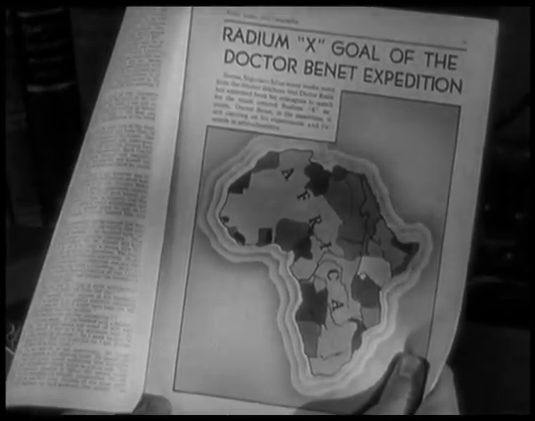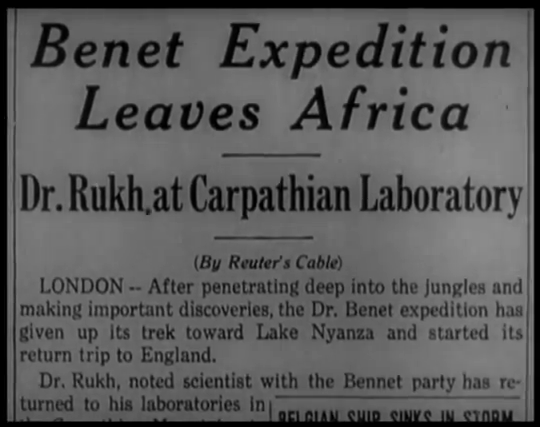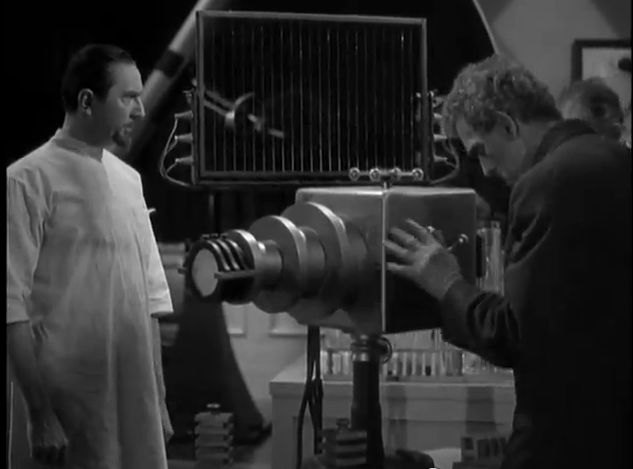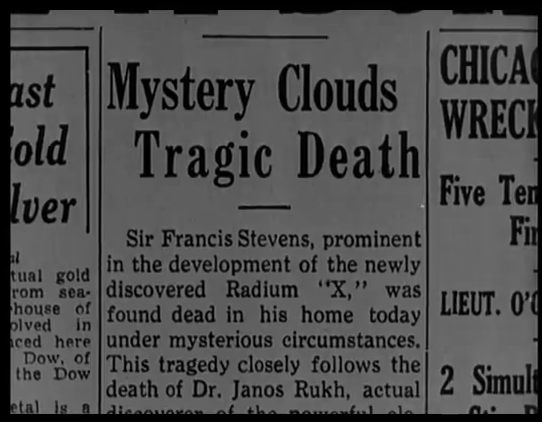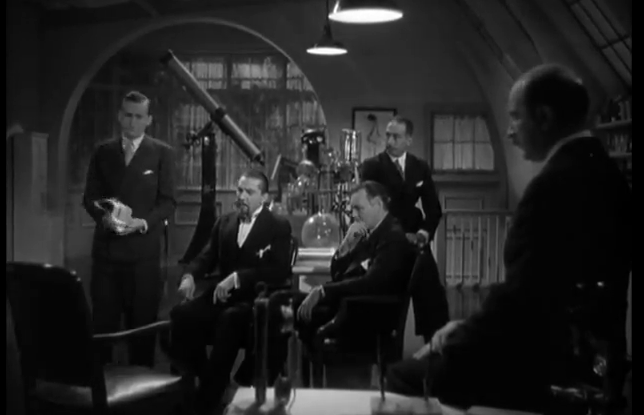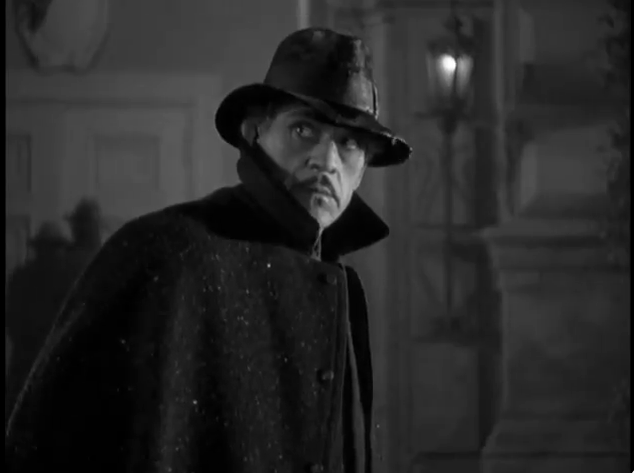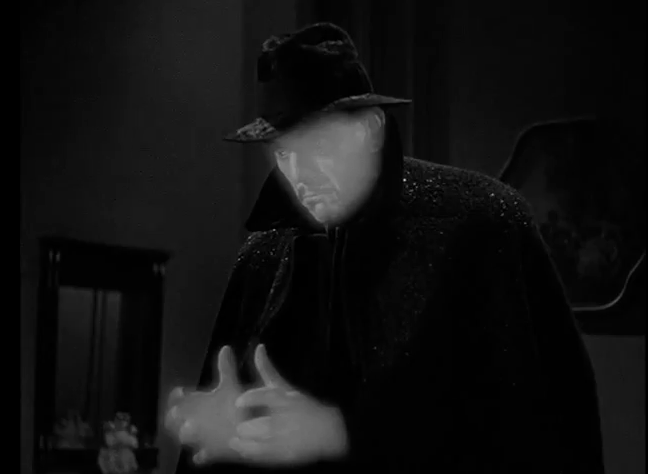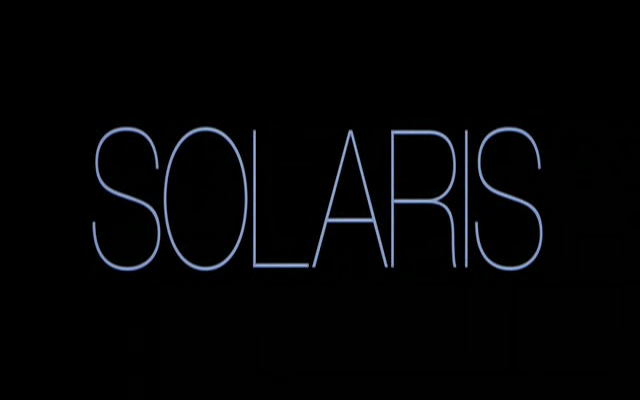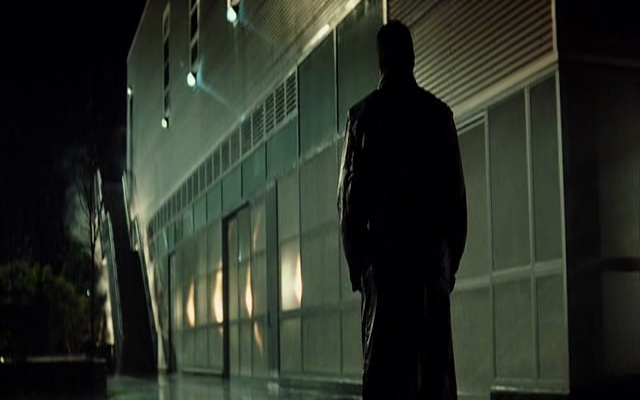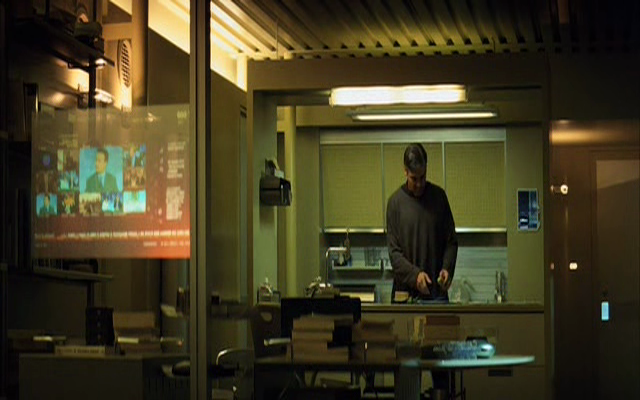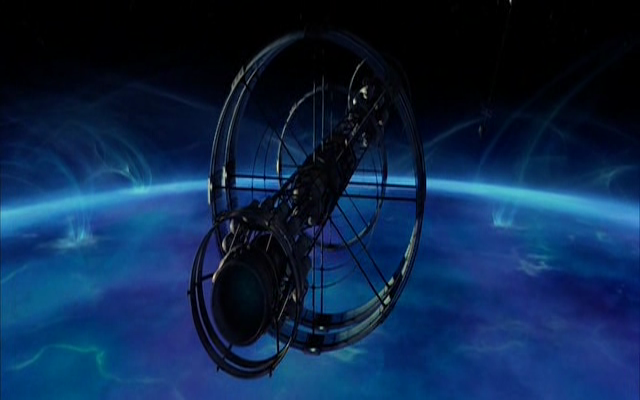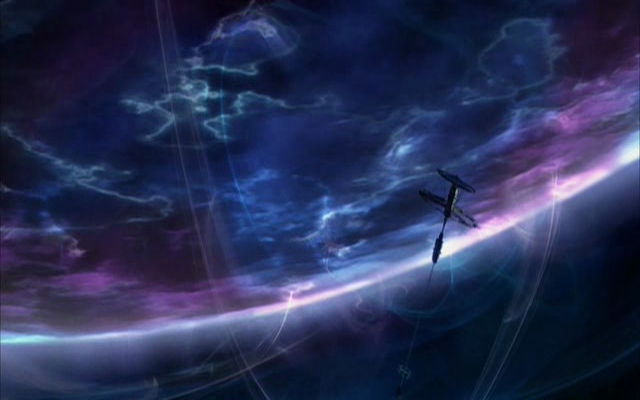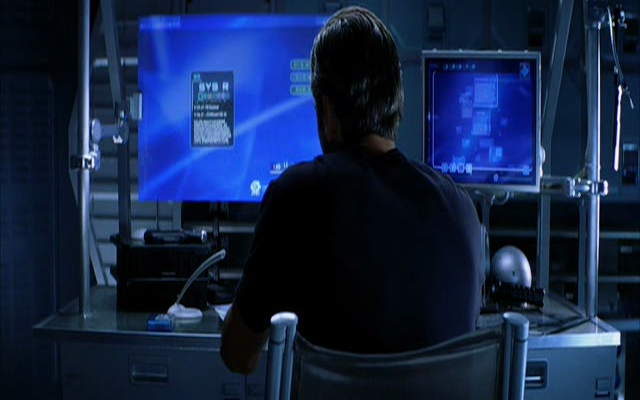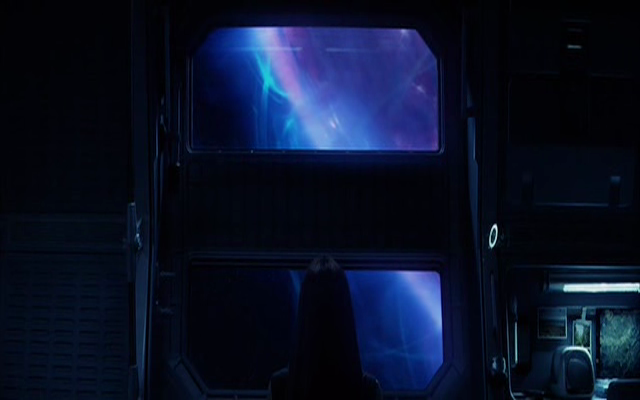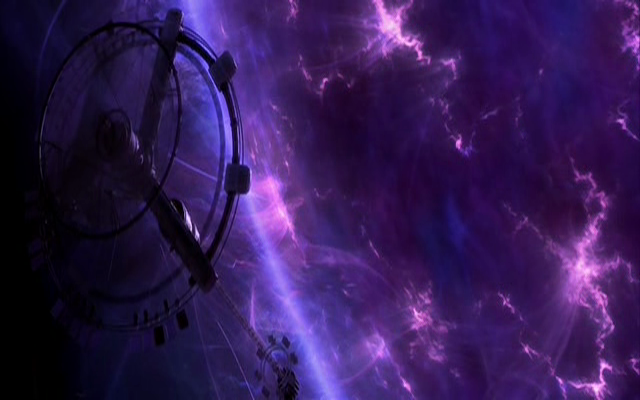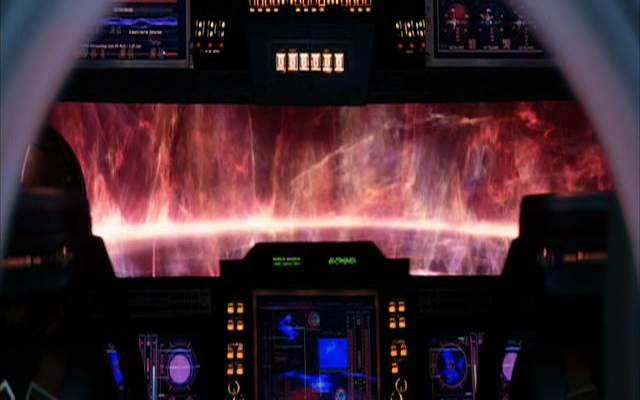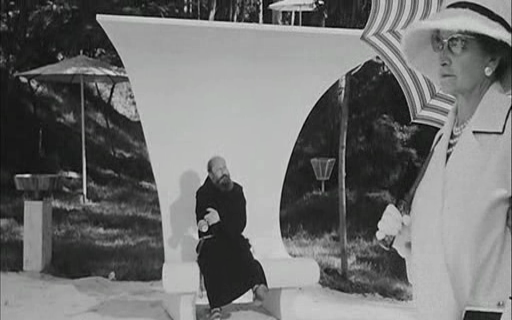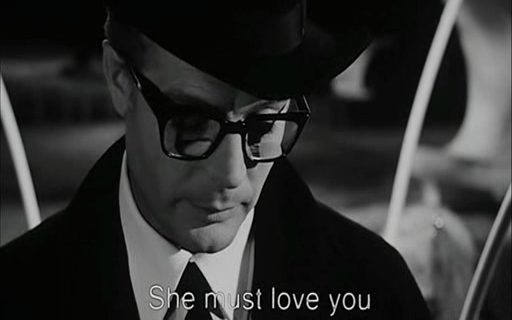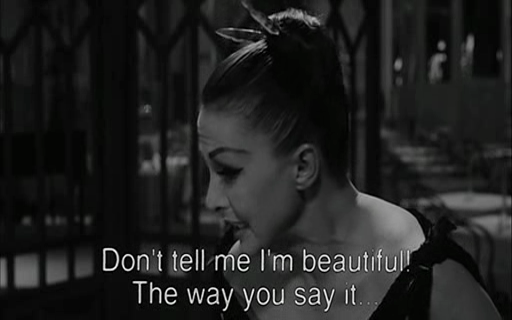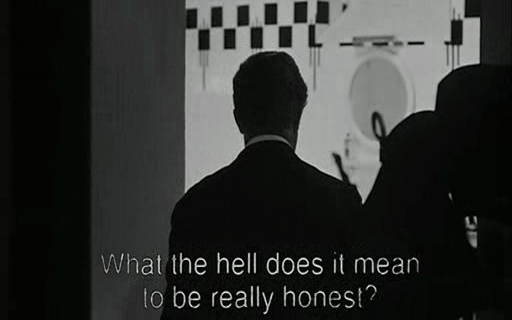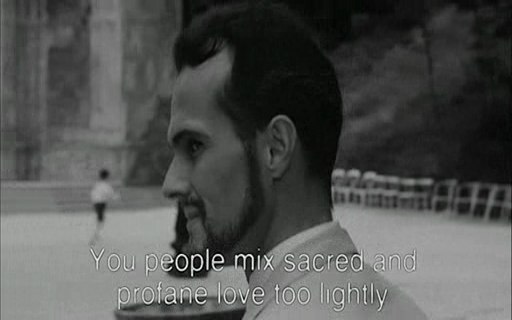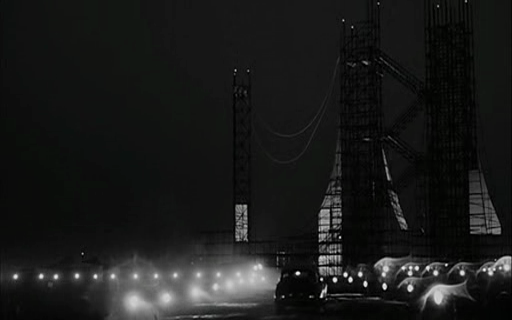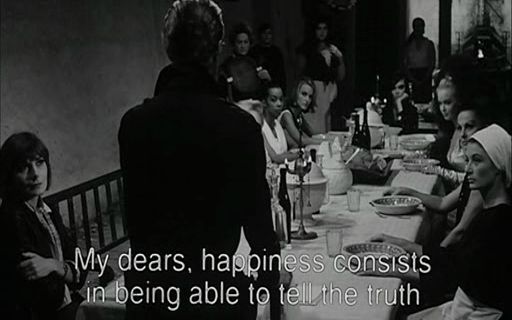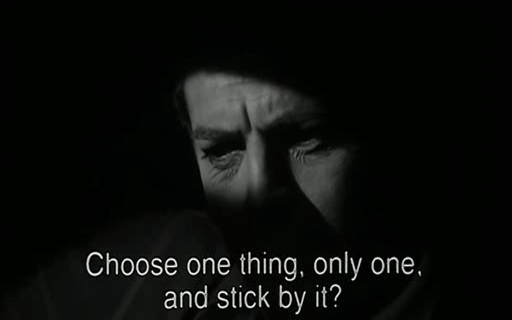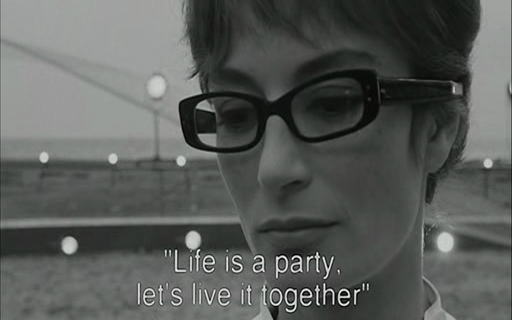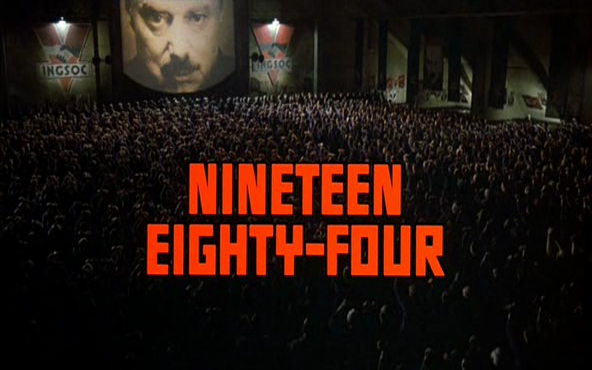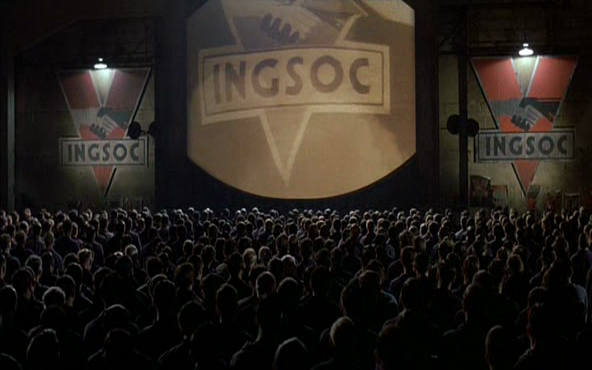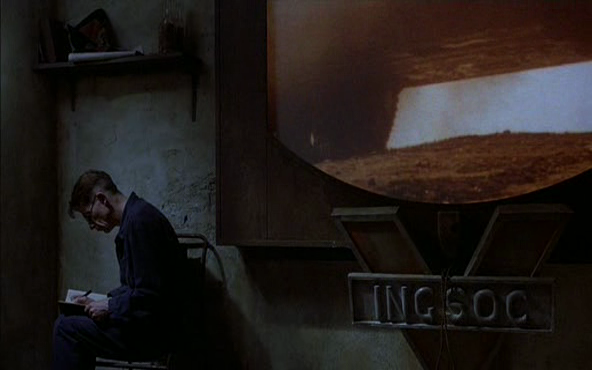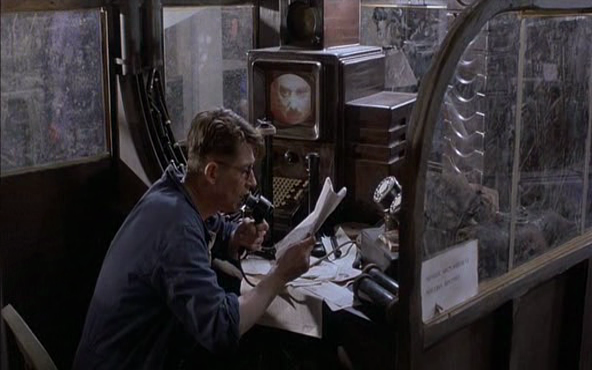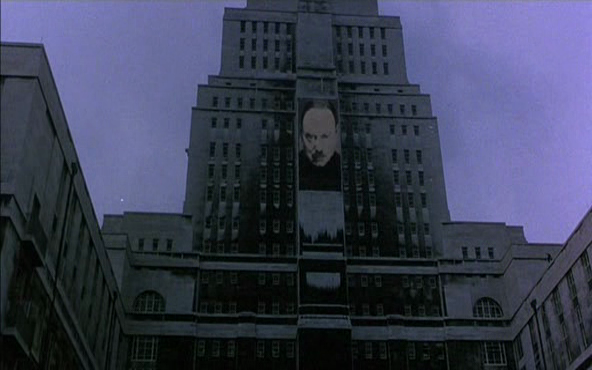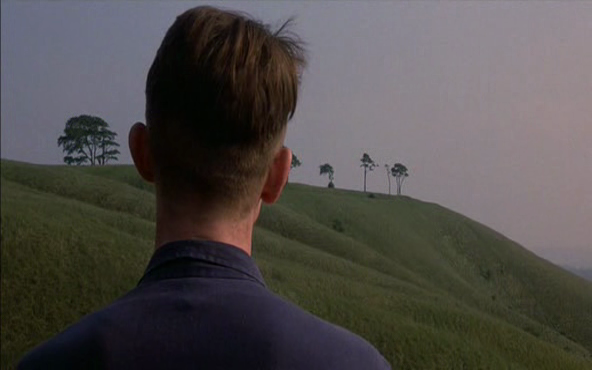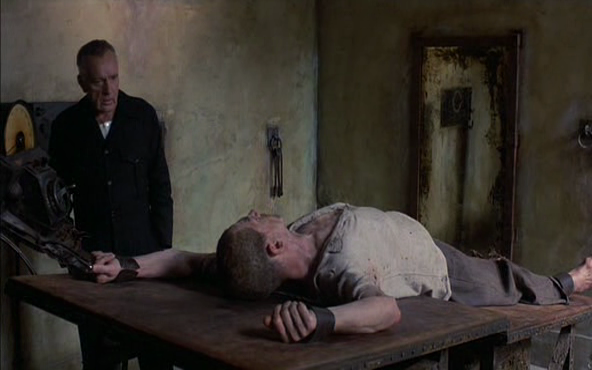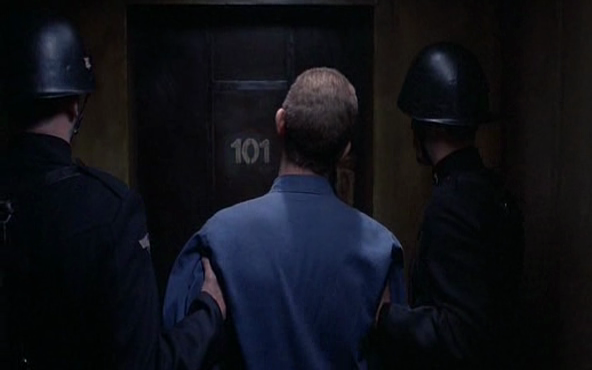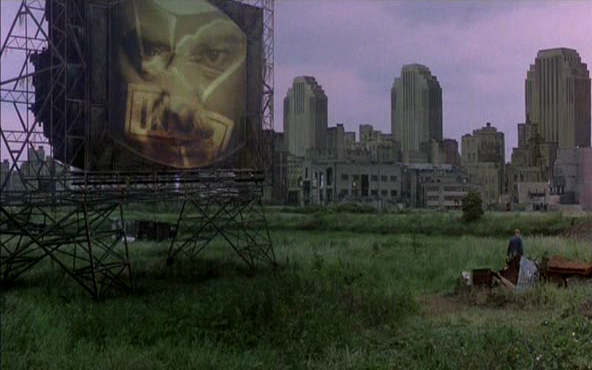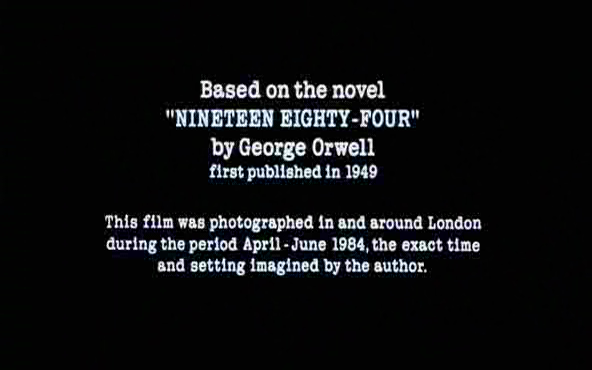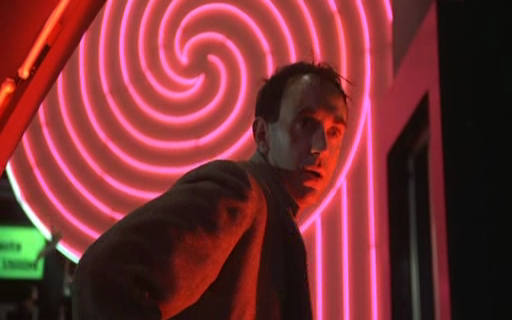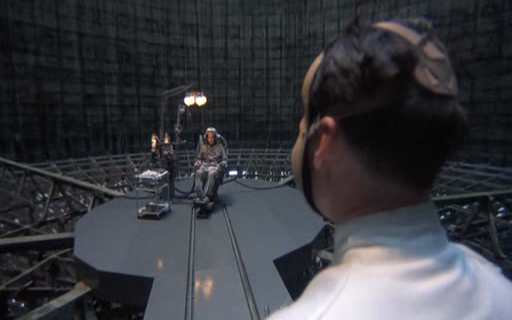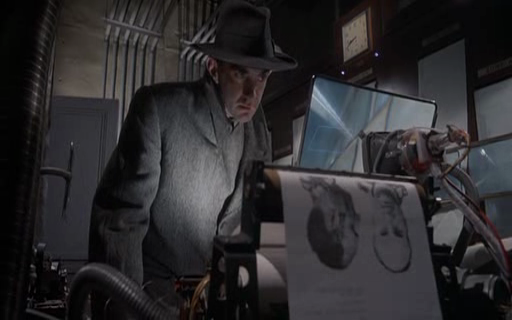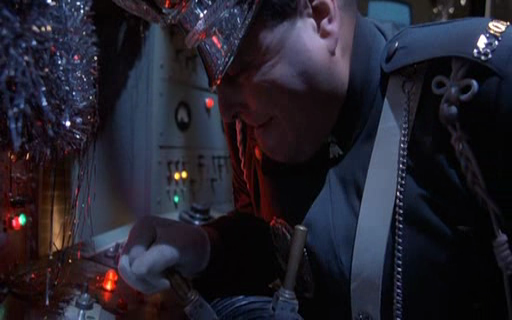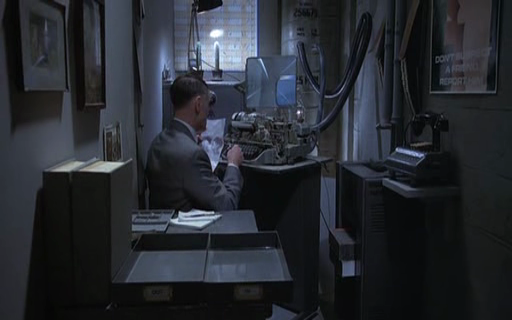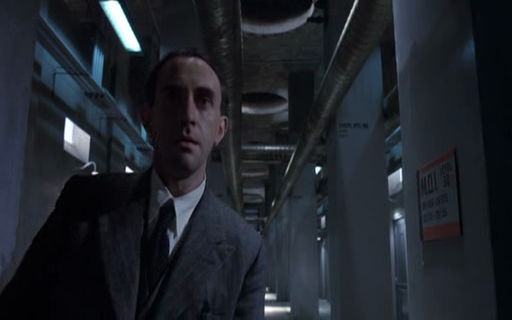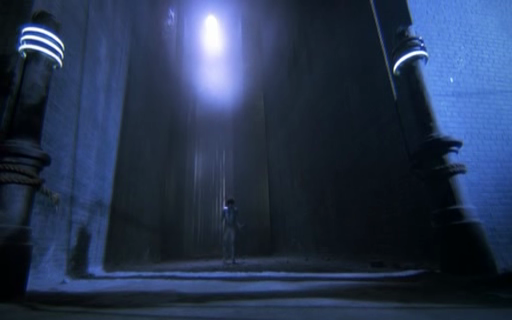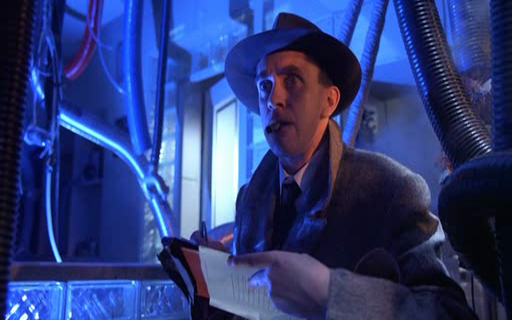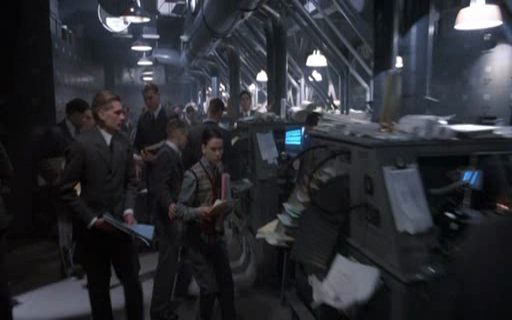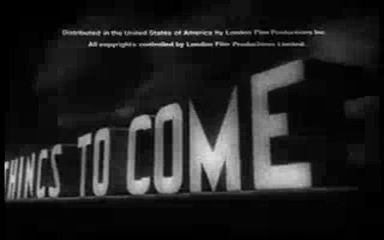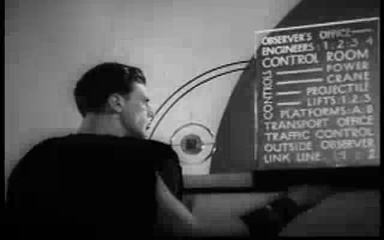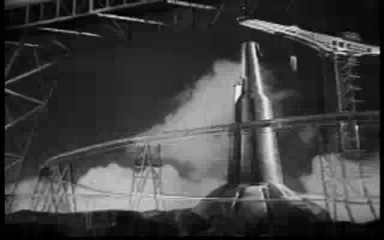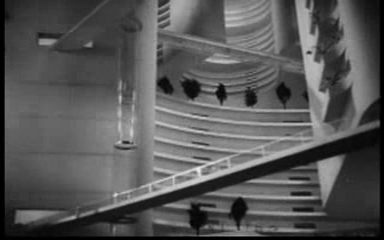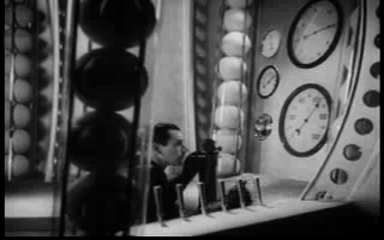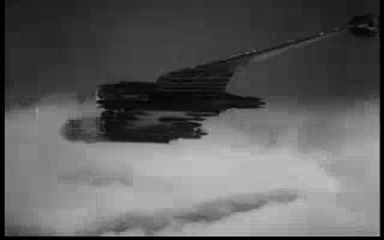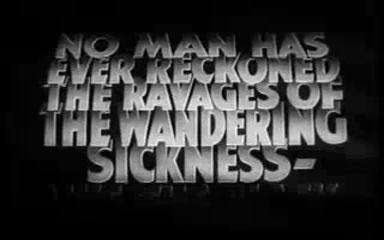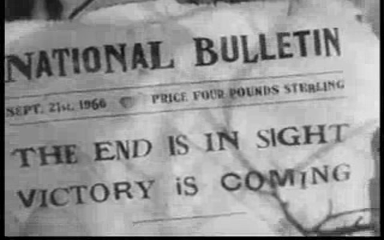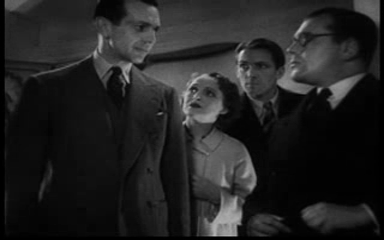-
#25 – Rocketship X-M (1950)
Rocketship X-M (1950)
Film review #25
Director: Kurt Neumann
The first science-fiction movie post-WWII to be set in outer space…did it live up to the hype?
At a government facility, members of the media have assembled at a press conference. There, Dr. Fleming announces that within the next 20 minutes, they will launch the first manned spaceship, Rocketship X-M (Xpedition-Moon) into outer space and to the moon. He then introduces the five crewmembers who will be on board: Col. Graham, the pilot. Dr. Lisa Van Horn, chemist. Dr. Karl Eckstrom, the ship’s designer. Major William Corrigan, the navigator and Harry Chamberlain, engineer. The five of them answer questions put to them by the press before making their way to the rocketship…
Everything is going smoothly with the journey until the ship mysteriously loses it’s velocity and stops in space. Graham and Van Horn re-calculate the equations for the ships fuel balance, and when they finally finish, they adjust the fuel composition and the ship regains velocity. This success is short-lived however, as the ship goes much faster than anticipated, and the crew is knocked unconscious as the ship speeds off into space…
As the crew awakens, they find they have drifted way off course, and when they look out the window, they realise how far: They see the planet Mars. They surmise they are being pulled there by some mysterious force, and they decide to let “a force greater than themselves” pull them to the surface. When they land, some of the crew have reservations about venturing out, but they eventually agree that the scientific value of the exploration is too great to pass up, and the five of them set out to explore the surface. Mars is a barren planet, but eventually they find evidence of an advanced civilisation in buildings and metal statues. Wondering what could have happened, they then detect a large amount of radiation and it all becomes clear: Nuclear war had reduced an atomic age to ruin, a lesson that the crew thinks should serve as an important message and warning to the people of Earth.
The crew rests in a cave during the night, and while the rest sleep, Harry notices creatures in the distance. He wakes everyone up and they go and investigate. They find footprints, and Eckstrom and Harry go and investigate. Eventually, they find a gang of primitive men. What has happened on this planet is now clear: An atomic age has become a stone age, caused by nuclear war. The cavemen become violent, and start to attack the crew by throwing rocks at them. They kill Harry, and Dr. Eckstrom runs back to the other three and tells them to run to the ship. Under the constant rock throwing, Eckstrom is then killed, and Corrigan is seriously wounded, so Lisa and Graham carry him back to the ship.
Making it’s way back to Earth, Lisa and Graham are reflecting on their journey. Approaching Earth, they realise that don’t have enough fuel to land, and in an attempt to ensure their whole journey wasn’t in vain, they attempt one last contact with Earth. Dr. Fleming, who has been waiting for news of the ship since it lost contact with Earth. They transmit the correct fuel equation they made, and warned him of the dangers of Mars, and the horrible consequence of nuclear weapons. After the radio falls silent, Lisa and Graham hold each other as the ship enters the atmosphere and crashes into a mountain range in Nova Scotia…
In Fleming’s office, members of the press enter, eager to know the fate of the rocketship. Fleming confirms that the ship that crashed near Nova Scotia is the X-M. When the journalists ask him if the mission was a failure, he says that the mission proved so much about space travel and exploration, and a strong message about the fate of mankind and the use of nuclear weapons could save humankind entirely. He then remarks that “Tomorrow will see the construction of X-M2”, and that this is only the beginning, resolute that the sacrifice of the X-M crew was not in vain…
While this is technically the first movie to be released post-WWII about space travel, it did cheat a little. Essentially, the first movie was supposed to be Destination Moon, but when that film got delayed, Rocketship X-M was quickly shot in 18 days and rushed into cinemas, hoping to capitalise on the hype surrounding Destination Moon and steal a bit of it’s thunder.
Being shot in eighteen days, you can’t really expect a very high production value from this film, and it shows. Most of the film is set in the rocketship, so no need to build lavish sets, and the uniforms are seemingly leftover military attire (Wearing a tie in space? Sure why not…). It should also be noted that a lot of the on-location scenes on the surface of Mars and shots of the rocket were not in the theatrical release, and instead stock footage of the V-2 rocket was used, again primarily due to the the film being quickly rushed out to beat Destination Moon into cinemas. These extra scenes were shot about twenty years later, carefully recreating the costumes from the movies and an accurate rocketship model by film enthusiast Wade Williams.
This film is very easygoing. There is no massive conflict, or no adrenaline-fuelled action sequences, the narrative of the movie is an account of the space travel itself, and what would happen during transit. For a movie that focuses such much on the details of space travel, there are a lot of scientific inaccuracies present in the film. For example, the inconsistency of representing gravity and weightlessness: Though they encounter occasionally the phenomenon of weightlessness in that random objects start floating, the ship is always seen like a cockpit of an airplane, with the crews feet firmly on the ground. The sound of the fuel tank being jettisoned, and when the rocket passes through a meteor shower, these scenes are accompanied by a sound, which of course would be impossible in the vaccuum of space. Also, it is mentioned that the ship has “twice the amount of fuel needed” to complete the voyage. This would be impractical for actual flights, but it does support the narrative, and allows the rocket to return to Earth after it’s lengthy detour to Mars.
The way in which Mars itself is depicted is also aloft with inaccuracies. The rocky, and barren nature of the planet is rather accurate, but the crew walk around the planet with just oxygen masks on. This would be impossible on the actual Mars due to the difference in pressure, so one would need at least some eye protection, and the cooler temperatures would mean some form of insulating clothing would need to be worn. Most of these inaccuracies we can overlook, since this movie was made seven years before the first man-made satellite was launched into space (Sputnik-1), and eleven years before the first human (Yuri Gagarin). So with very little to go on, the movie explores the different effects and experiences of space travel, and conveys them to an audience, they lack the scientific accuracy we come to expect from spaceflight, but one one has to remember the historical context in which this movie was made, and overlook certain portrayals of weightlessness and such forth. Of course, the rushed nature of the film certainly doesn’t help.
regarding the historical context of the film, casually calling a press conference some twenty minutes before the launch of the rocket shows a somewhat naiveity in how space travel works. Some of the attitudes towards the only female crewmember, Lisa Van Horn highlight the sexist attitudes of the 1950’s too. however, I found it rather difficult to tell if it was addressing the issue, such as when Dr. Eckstrom tells journalists she was selected for her expertise, and not because she was a woman, and other scenes when she asks whether one of the crew believes she should stay home and bake all day, he replies “isn’t that enough?” I think the dialogue really walks the line between being controversial, addressive and offensive from today’s perspective, though back then it probably would not have been labelled as such.
The ending is where the whole movie takes a dramatic twist. For a movie that is mostly casual and uneventful for the first hour, the last fifteen or so minutes sees the rocketship crash, and all five crewmembers die, far from the happy endings one usually sees in movies from this era. After this tragedy though, the ending is one not of just tragedy, but also of hope. Through the crew bravery and curiousity, they have successfully flown in space, landed on a hostile planet, and warned Earth of the dangers of nuclear weapons. The scientific curiosity is here glorified, and there sacrifice is far from in vain. While the scientist was being traditionally portrayed as the sidekick or out of the main spotlight in American cinema, this ending is quite powerful and challenging in comparison to other films of the day.
Overall, I’d say Rocketship X-M is very much a film of it’s day: Back when one could shoot a film in eighteen days and get away with it. The film shows the visions and possibilities of space travel, at a time when such things were only pipe dreams. It also serves as a warning about the dangers of nuclear weapons, and the power they possess to throw civilisation back to the stone age. While probably not a film you might casually watch nowadays, it reveals a lot about the time and place it was set, which I think makes it a rather significant film culturally. Although the film is unmistakeably a 1950’s film, the ending takes a bold step in almost martyring the scientist, both curious and adventurous, working towards the protection of mankind…
-
#24 – Stalker (1979)
Stalker (1979)
Director: Andrei Tarkovsky
Another science-fiction film directed by Andrei Tarkovsky, exploring the mysterious “Zone”…
In a home, we find a wife and child of The Stalker: A man who is hired by people to lead them through “The Zone”: A strange place where the laws of physics no longer apply. Within The Zone, there is a place called The Room, where people can go to get there one true wish fulfilled. The Stalker’s wife pleads with him not to go again to that dangerous place, but he ignores her pleas.
Stalker is hired by two men to escort them to The Zone. At a local bar, he meets the men, calling themselves “Professor” and “Writer”, who wish to find The Room and make their wish. The three set off through a military blockade that surrounds The Zone, avoiding patrols and gunfire, and finding a railcar to take them into The Zone itself…
The three arrive in The Zone, which resembles an overgrown area of countryside, with ruined debris scattered around. The lack of any sound gives it away that there is something not quite right about where they are. Stalker tells Professor and Writer to follow his instructions exactly, or they will be killed. He ties nuts/bolts to pieces of cloth, and throws them in the direction he works out is the best way to travel, to test out the safety of the route. The Writer is constantly skeptical of The Stalker’s odd actions, but The Professor generally follows his advice.
The two men have different reasons for visiting The Room. The Writer finds himself lacking in inspiration to write, and is hoping he can re-ignite his passions, while The Professor is hoping he can win the Nobel Prize. The Stalker mentions his mentor, Porcupine, who lead his Brother to death in The Zone, and wished for riches in The Room. However, a week later, he hung himself.
After travelling via a route of overgrown fields, underground tunnels and sand filled rooms, the three arrive outside The Room. There, a strangely placed phone begins to ring. the Writer answers and tells the person on the other end “This is not the clinic” and hangs up. Next, The Professor dials a number on the phone to brag to someone on the other end, and hangs up. The Stalker warns them both that The Room does not grant the wish they ask aloud, but it grants the true unconscious wish that resides deep within them. After this, the Professor reveals the real reason he came to The Room: He pulls out a bomb, saying that the power to grant wishes could be used for evil and terrible deeds, and because man should not have such power, needed to be destroyed. The three fight physically, and after a while, the Professor backs down from his plan, and the three sit down on the ground in defeat, none of them wishing to head into The Room and dare to have their wishes fulfilled…
Back in town, the three men are sitting in the bar where they first met. Stalker’s wife comes in and sees a dog that had got attached to Stalker and had followed him out of The Zone. Stalker then leaves the bar with his wife, the dog, and his child “Monkey”, who it was hinted at the start of the movie and now confirmed that she cannot walk on her legs without support (apparently she was born this way, and is a consequence of her father being a Stalker).
At home, Stalker’s wife tells him she has considered visiting The Room herself. Now, Stalker is having doubts about The Zone’s nature, and worries that her wishes would not be fulfilled. In a monologue to the camera, the Wife talks about whether she should leave Stalker, and the choices she has made by staying with him. She eventually re-confirms her commitment to him, while in the kitchen, Monkey sits at the table reciting a poem, she them apparently moves three glasses with the power of her mind (psychokinesis), and after the third glass falls to the floor, a train is heard going past the house, which causes it to shake…
A bit of background about this movie…this is another movie by Andrei Tarkovsky, most famously known for his 1972 movie Solaris. A lot of the production techniques used in that movie, such as long shots, steady camera motions, a slowly revealed plot, and a sparse and minimal soundtrack, were according to Tarkovsky himself much more refined in Stalker. Again, similar to Solaris, the movie is based on a novel, this one being Roadside Picnic by Boris and Arkady Strugatsky. The film deviates massively from the novel though, so much so that the only thing they really have in common are the terms “Stalker” and “Zone”. I think Tarkovsky took the novels concept as a base and applied his established style of filmmaking to it.
There is very little background and detail dedicated to the origins and mysteries of The Zone, why the military has surrounded it, and suchforth. Tarkovsky has expressed his dislike of western science-fiction, which focuses on flashy technology and quick changes in narratives and scenes. Stalker has a slowly revealed narrative that focuses on these three men as if they are the only people that matter. There discourse in some of the longer scenes reveals the impact of The Zone and it’s potential for the human race, and I think this is where Tarkovsky wants uis to focus our attention: On the conscious and unconscious aspects of human nature, and the insecurities and desires, both on the surface and deep within us, that makes us human.
Apparently, Tarkovsky went through 5000 metres of film while making this movie, and that isn’t a surprise when the movie has a runtime of over two and a half hours. Tarkovsky says with regards to the pacing at the beginning that “The film needs to be slower and duller at the start so that the viewers who walked into the wrong theatre have time to leave before the main action starts.” The fact that we have to wait nearly ten minutes into the film before we get the first bits of spoken daialogue is certainly proof of that. Also, I think Tarkovsky’s definition of “action” and ours is probably different, in a similar way to which our definition of science-fiction doesn’t perhaps match up to what happens in this film.
The world portrayed in Stalker is a ruined and desolate one, and it is easy to see why people would want to face the dangers of The Zone in order to get their wish granted. The world outside The Zone is filmed with a harsh sepia tone, and while one may instinctively associate sepia with nostalgia, here it is solely to highlight the grim and dull reality. When the film transistions to The Zone however, the world is in full colour, and the greens of the Eastern European countryside are revealed to us.
On a bit of a prophetic note; about seven years after making this film, the nuclear accident at Chernobyl occured, and the area which was affected by the radiation was officially called the “Zone of alienation”. It should be noted that the workers who are employed to work in the abandoned nuclear plant refer to themselves as “stalkers”, so clearly this movies image of empty and desolate wastelands found an equivilent in a real world disaster.
If you enjoyed Solaris and the cinematic techniques it employed, you will no doubt find Stalker of interest as well. However, if you have preconceptions about science-fiction being full of quick paced scenes, special effects and action, then perhaps this isn’t the movie for you. I think watching Solaris first is a good idea, since it somewhat bridges the gap between more traditional science-fiction and Tarkovsky’s own unique style of storytelling.
-
#23 – Solaris (1972)
Solaris (1972)
Film review #23
Director: Andrei Tarkovsky
A sci-fi epic delving into the depths of an ocean planet and the human mind…Was this the Soviet Union’s 2001: A Space Odyssey?
Chris Kelvin, a psychologist is spending sometime with his parents at their home. He is reflecting on his life down by the lakeside before he is sent to a space station orbiting the oceanic planet Solaris the very next day. Before leaving, he destroys most of his possessions in a bonfire, and says goodbye to his Father, who he does not expect to see again.
Upon arriving at the space station, Kelvin learns that one his old friends, Dr. Gibarian is dead (having committed suicide), and the only two surviving crewmembers, Dr. Snaut and Dr. Sartorius are not forthcoming with information about what has happened, and act strange when Kelvin pushes them for answers. Snaut advises him to rest in the quarters, and everything will become clear…
Upon waking up from his sleep, a woman has appeared in his quarters, despite him blocking the doorway. It turns out it is Hari, his deceased wife. Not wanting to be taken in by this obvious trick, he tricks her into getting into an escape rocket and jettisons her into space, but burns himself on the exhaust rockets. While Dr. Snaut tends to his wounds, he explains that these “visitors” have appeared to everyone aboard, and are an incarnation of people they know, being generated by Solaris in some way.
Later, Hari appears before Kelvin again. When he leaves the room, she tears through a door after him. He watches her regenerate her injuries right before his eyes. When Dr. Sartorius calls a meeting with everyone, Kelvin introduces Hari as his wife and insists they treat her with respect. Sartorius reveals his latest discovery, that the “visitors” could be attacked with a radiation blast of x-rays. Hari realises she is not human, and composed of the memories of Kelvin’s dead wife. Eventually, Kelvin tells Hari how his real wife committed suicide ten years ago. Becoming increasingly unable to cope, Hari kills herself again by ingesting liquid oxygen. However, she soon recovers.
While he is sleeping, Kelvin dreams about his Mother. and multiple images of Hari. When he wakes up, Hari is not there. Snaut gives him a goodbye note from her, as she has gone to Sartorius and got him to destroy her. After broadcasting Kelvin’s brainwaves over Solaris, small islands have appeared all over Solaris. Now Kelvin has to make the choice of returning to Earth, or to live on Solaris where everyone he has known and loved has been reborn. In the end, we see Kelvin in front of his parent’s house, as the camera zooms up to reveal an island on Solaris…
I have previously watched the 2002 “re-make” of Solaris, but I was pleasently surprised to find they are two completely different movies, and the plot deviates at a number of points. This version is very much akin to Kubrick’s 2001: A SpaceOdyssey, which was released in the west about three years prior to Solaris. The movie is entirely Russian, which draws up interesting more interesting comparisons between eastern and western science-fiction. Running in at over two and a half hours, this is very much an epic story that focuses on a slowly revealed narrative and development. 2001 and Solaris have the theme of communication between alien species as a central theme. In 2001 this includes the relationship between man and machine too, and any extraterrestrial species is never revealed or explained. In Solaris, we are confronted with an alien form of consciousness that can penetrate into the mind and memories of humans, and the question of this being hostile communication or not plays an important part in the storyline. The music too is sparse and far between, the only reccuring music being Ich ruf’ zu dir, Herr Jesu Christ by Bach. The biggest contrast between the two is that while 2001has an exceptionally high budget and finely crafted sets, Solaris has a more sparse and limited design. Apparently the director wanted to heighten the focus on the characters rather than building an imaginary and complex future which other science-fiction does.
Perhaps it is unfair to compare the two movies so closely. Solaris is an epic tale in it’s own right and deserves to be looked at as an individual entity. The original novel, written by Polish writer Stanisław Lem was published in 1961. This adaption focuses on the human psychology of extraterrestrial contact and the impact it has on the central characters, while the original novel had more of a focus on the “futility of extraterrestrial contact”. The characters themselves are constantly put at odds with each other with their views as to what to do with Solaris, and whether it should be abandoned or understood. The compex relations between themselves and Solaris evokes all kinds of philosophical rationales to a viewer, never giving the answer, just merely asking the questions. Whereas science-fiction very much traditionally works around the premise of an imagined future, that aspect of science-fiction is very much disregarded in Solaris, giving no real indication of time and place, and focusing entirely on this complex relationship between unknown life.
Solaris was only released in five Russian cinemas originally, but it remained a staple of the cinemas for years, and earned it a cult status. It is a film that is still widely regarded as one of the most important in science-fiction, and while definitely not a casual, easy to watch film like the 2002 version, in my opinion it is worth finding the time to sit down and absorb its message.
-
#21 – Dark Star (1974)
Dark Star (1974)
Film review #21
Director: John Carpenter
A science-fiction parody of 2001: A Space Odyssey. Does it stand as a film in it’s own right too?
In the 22nd century, humanity is beginning to colonise the far reaches of the universe. In order to do so, ships such as the Dark Star are sent to star systems armed with bombs to destroy planets which are deemed unstable and a threat to colonisation.
The Dark Star has been travelling in space for 20 years from Earth perspective (though they have only aged 3 years due to use of a hyperdrive). They have recently lost their leader, Commander Powell after a fault occurred in his rear seat panel. The remaining crew members: Lt. Doolittle, Sgt. Pinback, Boiler and Talby. After being in space for so long, the crew have found different ways to keep themselves busy, such as tanning under a lamp, playing an organ made from bottles, or just staring out at the universe every waking second. The crew sleep in the food storage locker, since the crew quarters had blown up, and like most of the ship, is in a state of disrepair which isn’t going to be fixed anytime soon, as political management on Earth refuses to send them any supplies. Pinback also “found” an alien while the ship has been in space, which he keeps in the food locker, which looks very much like a beachball, and torments him throughout the movie.
En route to another system in the Veil Nebula, the ship travels through an asteroid storm, which causes a malfunction in one of the communication lasers, which goes unnoticed. One of the ships “smart bombs”, #20, deploys itself due to this error, and the ship’s computer has to recall it multiple times. When the crew reach the next planet, bomb #20 is deployed and armed, but Talby, who is investigating the malfunction causes damage to the ship’s computer and makes the smart bomb unable to detach from the loading bay, meaning it will explode while still attached to the ship.
Doolittle heads down to cryogenic storage to talk to Commander Powell, who is barely alive after his accident with his rear seat panel, he eventually suggests talking to the bomb to convince it to disarm. He suits up and leaves the ship to converse with the bomb, and teaches it phenomenology, and that the data it is relying on to arm itself is not real, and cannot be trusted. The bomb concedes it needs more time to think about this, and disarms itself.
However, this victory is short-lived, as the bomb develops a God-complex, and with the words “let there be light”, explodes and sends Doolittle and Talby hurtling off in opposite directions (And Commander Powell too, encased in a block of ice). Talby is drawn in by the Phoenix asteroids, which are a special group of asteroids which orbit around the universe, and which Talby had mentioned he wanted to see earlier, and so he is left to travel around the universe with them. Doolittle is then left to be drawn into the planet, and he manages to grab a piece of debris from the ship which is shaped like a surfboard. As he mentioned to Talby earlier, he missed surfing back on Earth while being in space all these years, and so takes a ride on this makeshift surfboard as he descends into the planets orbit…
There are many differences between Dark Star and 2001, I think the most striking one for me is the differences in budget. While 2001 had an immense budget and lavish sets and design, Dark Star started out as a student film, and a £60k budget, which is hardly anything. This makes Dark Star look like an episode of Star Trek with model ships floating against backdrops and the cheap looking sets.And so because of this, 2001 still looks good and fresh today, while Dark Star looks very much of the time it was produced in terms of design, and the hairy cast complete with 70’s beards also reinforce this fact.
A similarity between the two is the use of music throughout the film, which is sparse and restricted to echo the silence of space travel. There is a difference in how they were produced though, with 2001 working with a full orchestra, and Dark Star having all its music produced by synthesisers by the producer. Different processes, same results (Though they differ somewhat in terms of quality).
2001 isn’t the only film Dark Star is connected to. The movie poster calls this movie “The mission of the Strangelove generation”, which obviously refers to Dr. Strangelove, a movie also produced by 2001 producer Stanley Kubrick. The relation between the two being centred around the mislaunch of a bomb is rather obvious. The “beachball” alien concept of the alien getting loose and terrorising the crew was reworked and changed to a horror genre, and became the classic movie Alien in 1979.
I think the most memorable part of the film is the scene in which Doolittle tries to talk the bomb out of exploding by teaching it phenomenology, and telling it that the data it has acquired cannot be trusted, and implanting the concept of Cartesian doubt in the bomb; eventually causes it to develop a God complex, possibly because the bomb figured that the only “thing” it could rely on was itself, so it concluded that it was the only being that mattered. It’s interesting to think about what a artificial mind would do with a phenomenological conundrum such as this.
Apparently, the movie didn’t receive much of a positive reception at the box office, as the movie was advertised as a serious movie, so perhaps the audience did not get what they expected. The movie also changes pace and direction quite a lot, but the plot never develops too much complexity, so it is still easy to follow. Dark Star is an odd film, never intended for cinematic release, but it takes on some of the classic science-fiction tropes in a satirical, humourous and just plain alternative way, which might make it worth a watch if you’re interested in that sort of thing.
-
#20 – The Invisible Ray (1936)
The Invisible Ray (1936)
Film review #20
Director: Lambert Hillyer
A film about the impacts of scientific discoveries on the human mind…
Dr. Janos Rukh is a bit of an outcast scientist. He has invented a telescope that can see far into space- in particular, the Andromeda Galaxy. By picking up rays of light from the galaxy, he can use them to look at how Earth looked in the past. He has invited A group of people to witness his experiment, including his wife Diana, Dr. Felix Benet, Sir Francis Stevens, his wife Arabella, and their nephew Drake.
The experiment is a success, and the group view the Earth from millions of years ago. They witness a meteor crashing into the continent of Africa, which coincides with the other scientists investigation into the meteor, and now they have a location to search thanks to Rukh’s experiment. During this evening, there is also an instant attraction between Diana Rukh and Drake, which they both try to ignore.
The group has travelled to Africa on an expedition to find the meteor. Rukh has split from the group to find it himself. When he finds the meteor, he becomes exposed to the radiation of “Radium X”, of which the meteor is composed. Later that night, when it is dark, he begins to glow as a side-effect to the radiation, and he can kill someone just by touching them. He confides in Dr. Benet, who develops a counteragent that Rukh must take every day so the effects don’t return and kill him.
The radiation also begins to affect Rukh’s mind. When the group return to Paris, Dr. Benet uses a fragment of the meteorite to heal sickness and cure blindness (the cure also works on Rukh’s elderly mother), Rukh feels as though his discovery has been stolen, and begins plotting revenge. He fakes his own death, upon which Diana and Drake marry. Rukh intends to kill off the five people on the expedition who have betrayed him, and he goes after them one by one.
Eventually, only Ronald, Diana and Benet are left. They work with the French police to spring a trap to lure him in by staging a lecture and inviting a number of leading scientists. They will turn off the lights at midnight, and if Rukh is there, he will light up. Rukh infiltrates the party and kills Benet, and heads upstairs to finish off Diana and Drake. Rukh finds Diana, but finds himself unable to kill his former wife, and goes to find Drake instead. Just then, his mother appears and tells Rukh to stop. She smashes the bottle of the counteragent made by Benet, and he jumps out a nearby window, falling to his death, and bursting into flames…
I think that what we have is an interesting scenario in this movie: What are the human ramifications of scientific pursuits? Rukh is very much portrayed as a recluse, and a little bit of a mad scientist. This characteristic is the central point of the film, as he slowly loses his mind and desires to exact revenge on those who have stolen his discovery. The foreword to the movie reminds us that every scientific fact was once “a fantastic fire burning in the mind of someone called mad”. A scientist must be daring to challenge what is already considered fact, and change people’s understanding of the universe. In the past, this would have earned them ridicule and persecution from religious leaders, heads of state and fellow scientists (Although this happens less so today, there is no doubt that it still exists.
The movie asks us to keep an open mind, and speculate whether the events that take place in the film could happen. Could we really look back in time by capturing the light of distant galaxies? Does that light contain information to what it has seen? It would be easy to dismiss such a wild tale, but we know that the light we see coming from distant stars is perhaps thousands of years old, and by looking at the stars in the night sky, we are essentially looking back in time. Could that light contain information about what it has seen during its travels? Very unlikely, but this movie does encourage us to keep an open mind to the possibilities of new discoveries that could change everything we know about the universe. This is what science is: A self-correcting procedure, though perhaps it is misrepresented as a cold, infallible truth, which is simply not (for me) what science is about.
-
#19 – Solaris (2002)
Solaris (2002)
Film review #19
Director: Steven Soderbergh
A psychological sci-fi movie delving into the human mind…
Chris Kelvin is a psychologist on Earth in an unspecified time in the future. One day he receives a visit from emissaries from the DBA, who give him a message from an old friend, Dr Gibarian, who wants him to come aboard the space station orbiting the planet Solaris to help them with the strange phenomena that is happening there, which is making the team not want to leave. The security team that went there did not report back, and Chris is to be sent as a last resort to rescue the team.
When Chris arrives at the station, he finds Gibarian has committed suicide, and most of the team have disappeared. The only surviving members are Snow, and Dr. Gordon. The survivors are reluctant to explain what is going on, and Snow suggests to “sleep with the door locked”. While sleeping, Chris dreams about his deceased wife Rheya, and how they met. When he wakes up, he finds her there: Seemingly real. He is reluctant to accept this, and tricks her into an escape pod and jettisons it into the planet.
When Chris falls asleep again, Rheya reappears, and this time Chris is more convinced and lets her stay. This creates a tension between him and Dr. Gordon, who believes these creations to be a threat to the human race, and why she does not want to return to Earth with one of them on board. Eventually, after learning of what Chris did to her the first time she appeared, she commits suicide. This is partly because she is made from Chris’s memories, and he remembers her as she was when he found her dead by killing herself. However, she begins to regenerate and heal herself. She has no more reason to live, and wants Dr. Gordon to kill her using a special device. Chris won’t allow it, but when he falls asleep, she goes the doctor and is destroyed.
After this, Chris and Dr. Gordon find the body of Snow, and they realise the one they have been talking to is an imposter, who killed the original Snow in self-defence when he first appeared. The use of the special device Gordon used to kill Rheya is causing the station to collapse into the planet, and the fake Snow they escape. On the way to the escape pod, Chris makes a decision to stay onboard, deciding he would rather stay with the memories of his wife. The film ends ambiguously, with the two reunited in a place where “Nothing that happened matters anymore”…
Solaris is an adaption of a Polish novel by Stanisław Lem, which was previously made into a film in 1972, to much critical acclaim. This adaption takes a different approach to the story, focusing more on the human interactions, rather than the original concept of the inadequacy of trying to communicate with an alien species. Because of this, the science-fiction aspects are very much toned down in favour of giving the movie a more “Hollywood-esque” appeal. Having an established actor such as George Clooney heading the cast is something one does not see in science-fiction films very often.
The film has a hint of 2001: A space Odyssey in its plot and set design. There is some ambiguity with regards to the reality of certain sequences, with dreams and flashbacks being neatly interwoven throughout the film (Which I have see before in films such as Brazil, Eight and a Half, and Nineteen-Eighty-Four). It is a very easygoing and light film: There are no intense action sequences or the like, but a bit of thinking and deduction are required on part of the viewer in order to work out everything that happens in the film.
The film is considered a decent one, even though it lost money at the box office (About ten million dollars approximately). It has appeared on lists of best remakes, and was generally well received. One person that did not approve of the film was the author of the original novel, who stated:
As Solaris‘ author I shall allow myself to repeat that I only wanted to create a vision of a human encounter with something that certainly exists, in a mighty manner perhaps, but cannot be reduced to human concepts, ideas or images. This is why the book was entitled Solaris and not Love in Outer Space.
The sacrifice of the scientific and philosophical elements of the original novel were perhaps necessary to getting the movie produced, and getting an “A-list” actor such as Clooney on board. While some of those elements still remain, it has been heavily diluted, and focus shifted onto a much more human-centric plot, which one reviewer described as giving the audience something science-fiction films don’t normally give: Emotion. So in conclusion, Solaris makes an attempt to create an emotional science-fiction and many believe it generally succeeds, though perhaps at the cost of being defined as science-fiction? That is up for debate…
-
18 – 8½ (1963)
8½ (1963)
Film review #18
Director: Federico Fellini
A film all about the trials and tribulations of being a film maker…
Guido Anselmi is trying to unwind and relax after his last film was a huge hit, however he just can’t seem to. He is surrounded and hounded by people who he has worked with in the past who want a role in his next film, and studio people, who are pressuring him into creating another big hit.
In this troubled period of his life, Guido starts to reminisce. We learn of his childhood, being brought up at a catholic school, and all the women he has loved and left, including his long suffering wife Luisa. He attempts to write a science-fiction film that is inspired by the events of his life, but finds that his life has been so full of twists and turns, that it is impossible to stick with one aspect or choice to use. He becomes increasingly frustrated by art, women and the film industry as the deadline approaches and everyone demands information about the upcoming movie, of which Guido still cannot make an artistic and resolved choice.
8½ is an Italian film directed by Frederico Fellini, his eighth and a half film (He had previously directed six films, two short films and collaborated on another, hence 8½), it is a thinly veiled autobiographical film about Fellini’s experiences in the film industry. I usually review science-fiction films, but this one is about making a science-fiction film, which is a little different, but still relates to my core research of taking a comprehensive look at science-fiction films as an art form and the issues and proposals they make.
This movie is very much about art and the life of the artist, specifically the film maker, but i think any sort of artist can relate to some of the things happening in the movie (I know I certainly did). The trouble of indecisiveness and being overpowered by everything one has seen and experienced in their life is a problem that every artist faces. Throughout the movie, we are posed these questions through the eyes of Anselmi and his suffering. Guido as the protagonist is someone who we are meant to sympathise and feel sorry for, as he is surrounded by “hangers on”, who want to take advantage of his fame. Though we are introduced to the numerous women of his life with whom he has had affairs with over the years, and how this has affected his wife Luisa, we are still directed to feel sympathy for Guido.
This film has a very surrealist aspect to it too. The film opens with a bizarre dream sequence, and throughout the movie, the film slips between reality, fantasy and flashback almost seamlessly, so it can be difficult to follow when reality ends and a dream begins, and making the narrative confusing, however, I do not think this detracts from the movies impact. Some of the set designs also evoke that essence of surrealism, in some ways similar to the way Last Year At Marienbad does, which was released two years earlier. 8½ was also an inspiration for Brazil in 1985, of which one of its working titles was 1984½ (A reference to the movie being influenced by 1984 and this).
8½ was released to universal acclaim, and regularly makes its way into lists of top films. It’s thought provoking, and philosophical nature is layered with the piling of imagery upon imagery which causes reality and fantasy to become increasingly blurred, and offers a powerful insight into the creative process, and perhaps bravely, it does not dilute it with any other plot devices or narratives, instead focuses entirely on the protagonist and what goes on in his head. Coming in at over 2 hours, it can get very confusing and exhausting to watch (I think it really started to pick up after about a hour, when I really got into it), but I think that any artist or creatively-minded person can connect with the philosophy of the movie, and if you have any sort of interest in the history of cinema, it is definitely worth a watch.
-
#17 – Nineteen Eighty-Four (1984)
Nineteen Eighty-Four (1984)
Film review #17
Director: Michael Radford
A 1984 movie adaption of the famous George Orwell novel 1984 where The Party is everything and all powerful.
In a dystopian 1984, Winston Smith lives in a squalid existence in the ruined state of Oceania. His job is at the Ministry of Truth is to re-write history in accordance with the current political situation. He is haunted by memories of his childhood when his Mother and Sister disappeared. He also keeps a journal of his private thoughts, which is a thoughtcrime, breaking the law of no independent thought.
One day, Winston meets a woman named Julia, and begins an affair with her. (It is against the law for people to fall in love), they live a secret life in an illegal apartment, and drink and eat various forbidden foods such as real coffee and real bread, whereas the workers usually get standard rations to live on, which helps support the parties war effort.
The couple’s (somewhat) blissful existence comes to an end when the two are arrested by the Thought Police. It turns out that the man from whom they were renting the room from is a member of the ruling party. After a lengthy interrogation, Winston learns the truth: That the enemy of the state; Emmanuel Goldstein, does not exist and was invented by the party (The same is seemingly held true for Big Brother). His interrogation continues into Room 101, where he is confronted by his worst fear: Rats. Upon betraying Julia, insisting they inflict the pain on her, is deemed cured, and fit to be released.
In the final scene, Winston is sitting in the Chestnut Tree Café, where he had seen previously rehabilitated criminals. He meets Julia, who informs him of how she betrayed him. Clearly having lost any affection for each other, she leaves, and Winston is left with the glaring image of Big Brother in the café…
There have been a number of adaptations of 1984, into TV series, movies and radio dramas. This particular movie is of particular interest because it was produced in 1984, the year the novel was set. Obviously, when the novel was written in the late 40’s it was a look at the future, but when the movie was made, it was present day…yet it isn’t, because the 1984 it was produced in wasn’t much like the version in the movie. This brings up an interesting comparison between the one imagined by Orwell in 1949, and the actual one. It was however, shot in and around London, where the novel takes place, in the same year and months that the novel takes place.
We perhaps can be thankful that 1984 did not turn out the way that Orwell imagined, which is depicted as a run-down city with no maintenance, and the population live in squaller. Writing after the end of World War II, after the bombing and destruction of Britain’s cities, it was probably difficult to imagine a future rising from the ashes of the war. Another interesting footnote in the development of the movie is that Orwell’s widow, Sonia Brownell only gave permission for the film to be adapted shortly before her death, under the condition that no “futuristic special effects” were used in making the film. This decision perhaps adds to the relevancy of the film, making as “present day” as possible, while still keeping the real and imagined apart.
There is a sense of psychological terror in 1984 that is used to address society that isn’t really seen quite as strongly in other science-fiction works, though it still fits in with the British views of science-fiction. The film takes the concepts of invasion and governmental control to the last bastion of humanity: The inner-most thoughts of the mind. it is a dark and terrifying prospect that is raised, that people will yield control of their lives to the government under the blanket of fear of war and invasion.
Overall, it is a positively received adaption of the book, in comparison to the 1956 US movie (Which gave the story a happier ending, but hasn’t been released since). The franchise has become a mainstay of science-fiction and British culture, with concepts such as “Big Brother”, “newspeak” and “thought police” being popularised by the novel. It also has influenced other films, such as Brazil in 1985, which deals with very similar themes but with a more black humour, or V for Vendetta. So, if you enjoyed 1984 the novel, this adaptation shouldn’t disappoint.
-
#16 – Brazil (1985)
Brazil (1985)
Film review #16
Director: Terry Gilliam
A science-fiction film where information is king…
In an unidentified country, a man named Sam Lowry often find himself dreaming about saving a beautiful woman. In reality however, he is a low-level government employee at the ministry of records. Information and paperwork rules society here, and mistakes are unheard of. However, Sam is given the task of rectifying a mistake that caused Archibald Buttle instead of Archibald Tuttle to be arrested and (accidentally) killed.
Sam goes to deliver a reimbursement cheque to the widowed Mrs Buttle, since any cost of arrest and detainment are met by the perpetrator. She is however, stricken with grief, and refuses to fill out the paperwork. Sam then sees the woman living upstairs and recognises her as the woman from his dreams, he gives chase and loses her, but learns her name: Jill Lawton. However, he cannot access her records because she is considered a suspect for trying to report the mistake of Buttle’s arrest to a government that does not admit to making mistakes. When he returns home, he meets the real Tuttle, who helps to fix his air conditioning when it fails and Central Services (the company that handles all the repairs) is short-staffed. Tuttle is a renegade repairman who fixes things without the assistance of Central Services, which is highly illegal.
Sam figures the only way to get access to Jill’s records and her location is to accept his Mother’s help to get promoted to the Ministry of information retrieval. He goes to see her while she is in the midst of more plastic surgery. When he arrives at his new office at the ministry, he retrieves the records and tracks her down before she is arrested, after declaring he is in love with her, he erases her records to classify her as deceased. After sharing a romantic night with her, Sam is arrested.
Sam is tied to a chair ready for interrogation for misusing his government position. His old friend Jack is carrying out the interrogation, where he tells Sam Jill was killed resisting arrest. Suddenly, Tuttle and the resistance rappel in from the roof and free him. They break out of the ministry and go on the run, where Tuttle seems to disappear in a flurry of paperwork. Sam then stumbles upon the funeral of his Mother’s friend who has died from excessive plastic surgery. Sam’s mother now looks younger than him thanks to the plastic surgery, and Sam escapes in horror, and is rescued by Jill in her truck, and the two drive off into the sunset. This happy ending turns out to be short-lived however, when the scene cuts back to the interrogation room, where Sam has gone catatonic from the interrogation, and the film ends with him humming “Brazil” as Jack and the information minister exit the room…
Brazil is a very British film, featuring an almost entirely British cast. The ministries and locations are reminiscent of something you would find in Britain rather than the US for example. The humour lends itself to become a black comedy, similar to other British films such as Monty Python or Time Bandits (Also produced by Terry Gilliam). This comedic element is a very fresh take on the science-fiction genre, since the two are rarely combined. The dystopic nature of the film too is also a different take on future society which is favoured by Britain over the utopian views of the US, as shown by British TV shows such as Doctor Who.
The direction and design are reminiscent of other films and future views. For example, the retro-fitted design of the city filled with neon lighting and tightly packed rooms filled with electronics is similar to Blade Runner, while the concept of government being flawless and all knowledgeable is similar to George Orwell’s 1984. It should be noted that While Blade Runner was meant to represent a near future (2020), Brazil is very much a reflection on the (then) present day government. In this respect, it relates to how 1984 was written about a futuristic 1984, but Gilliam notes it is a “Nineteen-Eighty Four for 1984”, seemingly eager to emphasise its relevance to contemporary society. Unlike 1984 though, it lacks any sort of “Big brother” figure who ultimately watches and rules society. the architecture itself seems to be somewhat similar to the movie Metropolis as well. The dream sequences in Brazil also have a similarity to the dream sequences in Blade Runner. Neither film really explains the dreams, but perhaps they show the desire for people to break out of the regimented control of society. The suits, hats and waistcoats wore by the workers gives the movie a 40’s “noir” feel too, and makes the film feel like a 1940’s vision of 1985, with some things the same, but some things quite different. This again gives the movie a strange uncertainty about its location in time. As we look back on movies from the past with a “comical aesthetic” and find the sets and props rather humours in their inaccuracy, it could be concluded that this is what Gilliam intentionally wanted for Brazil, which fits the black comedy nature of the script nicely.
As Brazil is perhaps more of a present day take on society than 1984 or Blade Runner (As the beginning of the film says it takes place “sometime in the 20th century), we do not really see futuristic technology on display, but we see a different way of utilising technology than we do now. For example, the telephones look like telephones, but seem to have a completely different way of working than how we would normally use them. The same goes with computers, which look like a typewriter with a strange transparent screen, although many people did not have personal computers in 1985, they did not look look like what they do in the film. The duct-pipes have a very distinctive style, with these long inflatable pipes running through every location. When we see the inside of the air conditioning of Sam’s apartment, we see a mess of ducts and pipes that is carefully hidden behind these large metal plates. I can’t help but think this is a commentary of how society and governments likes to hide all the inconvenient mess behind clean, shiny coverings…except in the working-class homes, the ducts have not tried to be hidden, but seem to snake around the homes and obstruct the people that live there.
Brazil was not much of a success at the box office (The US box office especially), probably due to its unhappy ending, and coming in at nearly two and a half hours. Despite this, it has been recognised as a “cult film” and is highly regarded by critics, regularly appearing in top 10 lists for best science-fiction, British or cult films, and seems to have had an influence in the development of films, for example the apartment of Max Cohen in the movie Pi was inspired by this movie. I personally think it s definitely worth a watch when you have a two and a half hours, as it is a good mixture of social commentary, science-fiction and black humour, which is really enjoyable.
-
#15 – Things to Come (1936)
Things To Come (1936)
Film review #15
Director: William Cameron Menzies
A look at just what the future could hold in the next 100 years…
Christmas 1940: In Everytown, John Cabal finds it hard to celebrate because he fears impending war. His feelings are shared by his friend Dr. Harding, but their optimistic friend Passworthy insists that war will advance technological progress if it does happen. Their fears are confirmed later that night when a bombing raid on the town triggers global war. Cabal becomes a pilot and some time later, shoots down en enemy bi-plane. When landing, he pulls the injured enemy pilot from the wreckage, and reflects on the whole madness of war. A little girl runs up to them, closely followed by a poisonous gas cloud. Cabal puts on his gas mask, and the enemy pilot gives his to the girl. Cabal gives the pilot his pistol as he and the girl run, and the pilot shoots himself. The war rages on for over 25 years, resulting in the almost complete collapse of civilisation, with technology being exhausted from fighting and plunging the world into a new Dark Age. With the last few planes, the enemy spreads a disease which becomes known as the “wandering sickness”, of which there is no technology with which to develop a cure.
May Day 1970: In the ruins of Everytown, a man known as The Chief declares he has ridden the world of wandering sickness by shooting everyone who was infected. He still however, wishes to wage war, trying to defeat the “hill people” so he can gain control of the mines and their oil, which he wants to use to power his planes. When a futuristic plane lands outside town, John Cabal emerges and declares himself a part of the new civilisation “Wings Over The World”, based in Basra, Iraq. He says the new world order made of the surviving engineers and mechanics has eradicated war, and abolished independent nations. The Chief refuses to listen to him, and has him locked up. Gordon, a mechanic who The Chief has been ordered to fix the pre-war planes he has, wants to help Cabal, and with the help of Cabal’s old friend, Dr. Harding, fixes a plane and flies to the Wings Of The World headquarters to warn them of Cabal’s imprisonment. They mobilise a fleet, and uses their “peace gas”, drop it on the town and render the population unconscious, and killing The Chief, signalling the end of the old ways of war.
1936: Everytown, and the world is now a futuristic utopia, in which everyone works together for scientific progress and achievement, however a sculptor by the name of Theotocopulos is not content with society, he says man needs a “rest” from the rush of technological progress, with mankind about to take its first manned flight around the moon. Cabal’s great grandson Oswald Cabal is now head of the governing council. His daughter Catherine and her boyfriend Horrie Passworthy insist on being the ones to fly the spaceship. When Theotocopulos rallies a mob to attack the “space gun”, the symbol of the technological progress, Cabal launches the ship ahead of schedule, as the mob descends on the space gun. The movie ends with Cabal reflecting on the nature of progress and what part humanity plays in the quest for knowledge:
“Rest enough for the individual man. Too much of it and too soon, and we call it death. But for MAN no rest and no ending. He must go on–conquest beyond conquest. This little planet and its winds and ways, and all the laws of mind and matter that restrain him. Then the planets about him, and at last out across immensity to the stars. And when he has conquered all the deeps of space and all the mysteries of time–still he will be beginning.”
…
“If we are no more than animals–we must snatch atour little scraps of happiness and live and suffer and pass, mattering no more–than all the other animals do–or have done.” (He points out at the stars.) “It is that–or this? All the universe–or nothingness…. Which shall it be, Passworthy? Which shall it be?”
This film was written by famed Sci-fi screenwriter H.G.Wells (War of the Worlds), and it does what science-fiction does best: Imagines the future, and considers the philosophical implications of said future.
But just how accurate was H.G.Wells’ prediction? Well first of all, most ominously, he predicted the outbreak of a second world war only sixteen months from when it actually happened. The accuracy of which he predicted the use of aeroplanes and bombing raids is also rather eerie. The nationality of the enemy fighters is never mentioned, but it does not take much imagination to say they are German. Luckily, the Second World War only lasted six years rather than the imagined 26 years in the film, and we managed to avoid plunging the world into another Dark Age. Perhaps because of this, we were able to land on the moon a lot earlier than 2036 (1969).
A lot of questions are raised in the film about the relationship between humanity and science: Is there a balance between science and humanism? Mankind must continue to build its knowledge and broaden its horizons, even if there is no limit to what may be learned. So how are we still able to retain our humanity in the face of the overwhelming face of progress? Is war a part of being human itself? These are all questions that still hold relevance today (and always will). The fact that an artist questions the society of 2036 is a point of interest. Is it the artists role to reinforce humanity and to address the problems of society?
The cinematic design of the movie is very well done for its time. The silhouettes of marching soldiers, air raids, and building montages that segue the different sections of the movie really set the mood of the movie and what is happening as the dates and years scroll by on the screen. The changing architecture of the fictional Everytown in Southern England where the town is set also allows the nature of time passing to be seen, from 1930s city, to post apocalyptic ruin, to future metropolis. The same town undergoes a radical transformation over the 100 years that the film depicts.
So in conclusion, Things To Come is an ominous look at the future as seen in 1936, from imagining WWII, to the recovery from the collapse of society from war, the question always remains of how humanity copes with progress and science, and just what being human means in the age of science.
